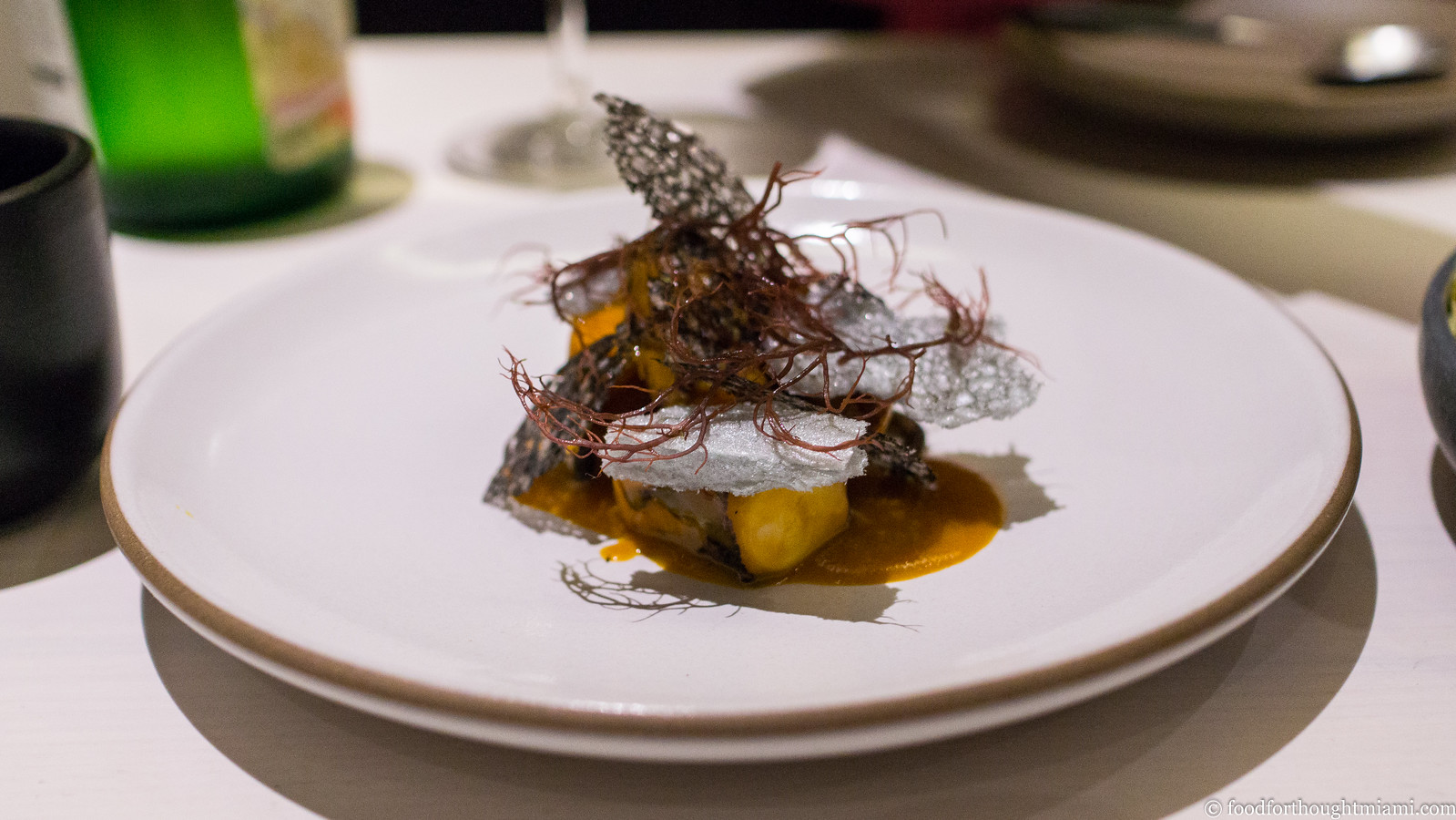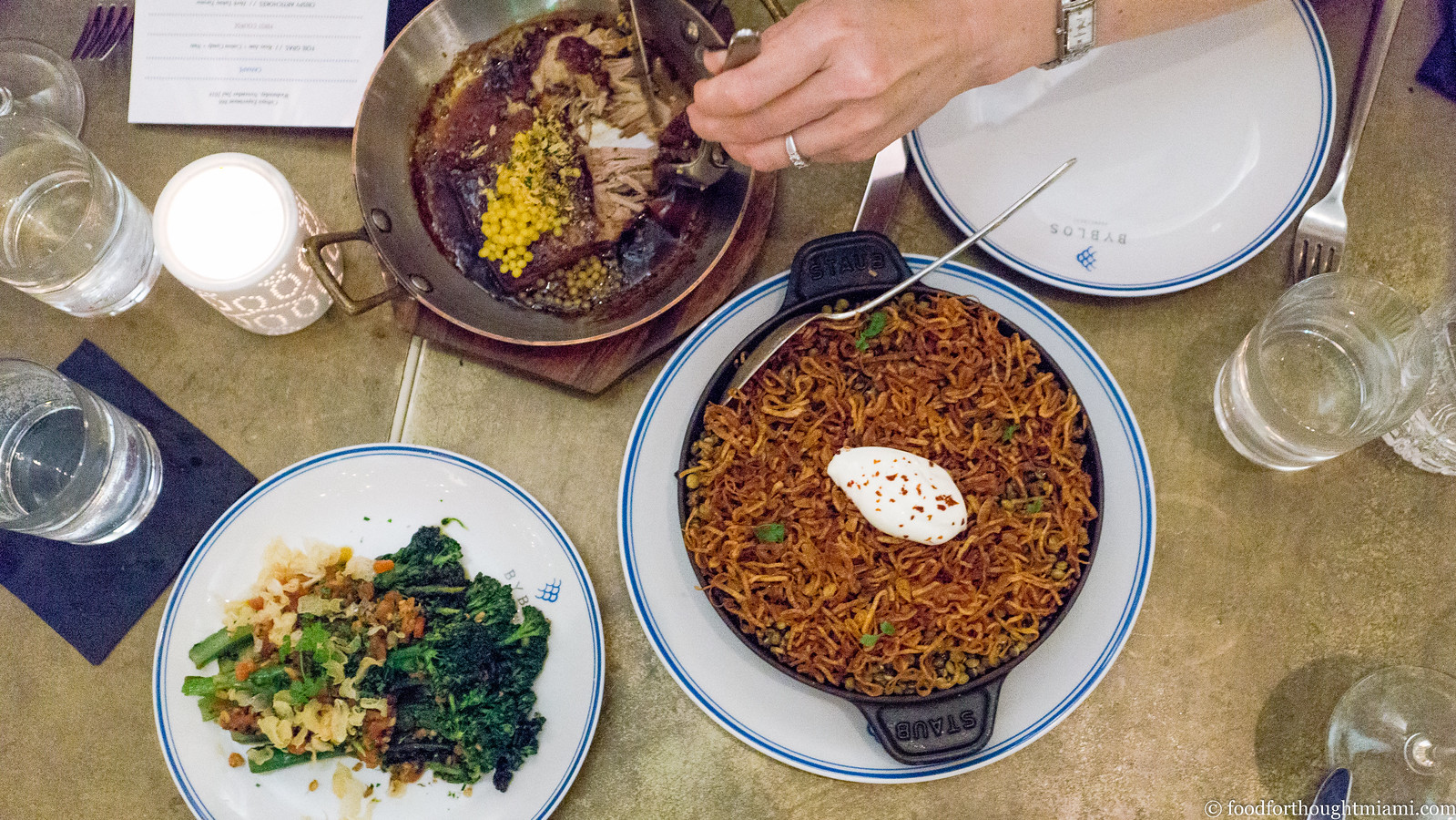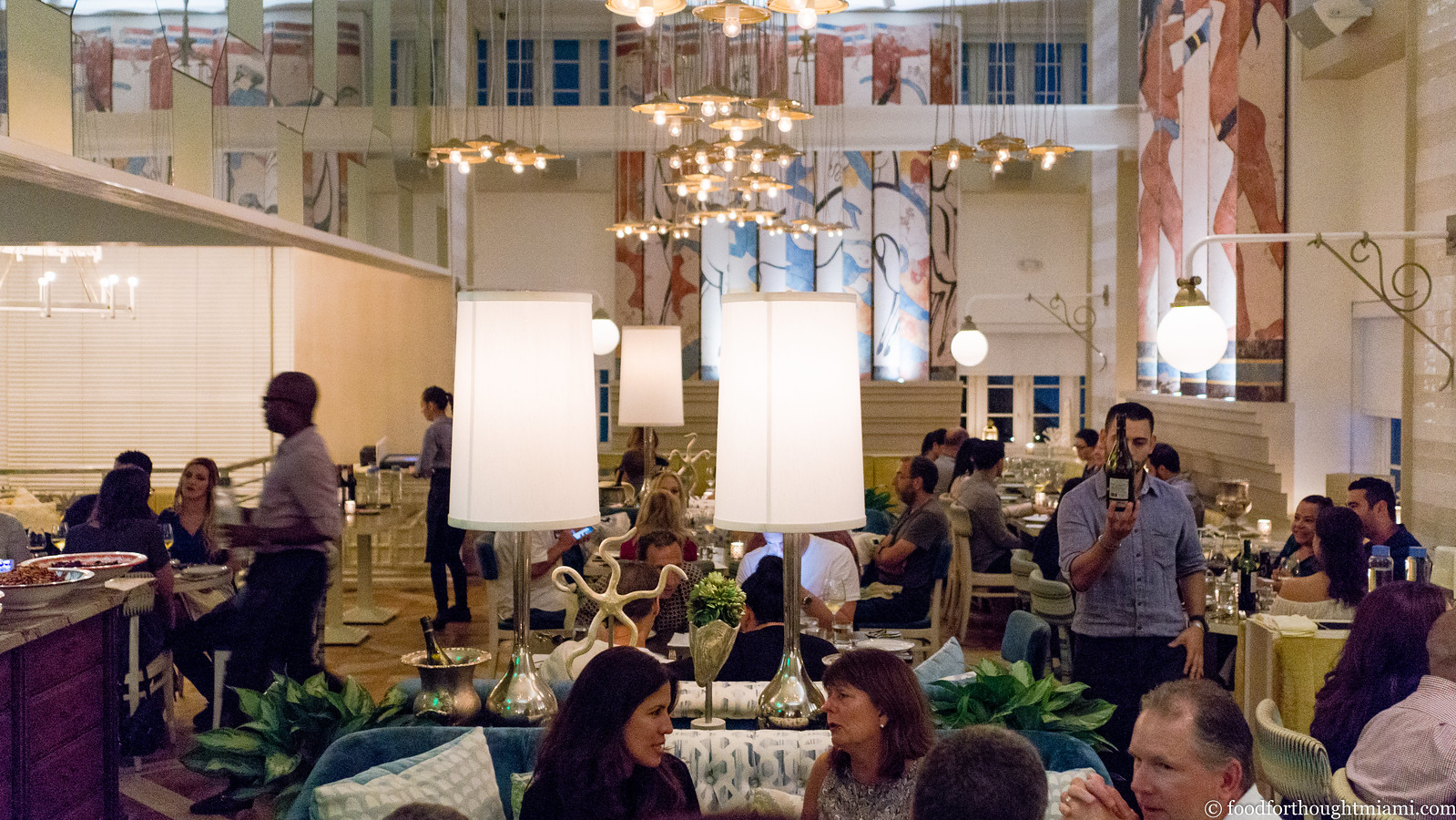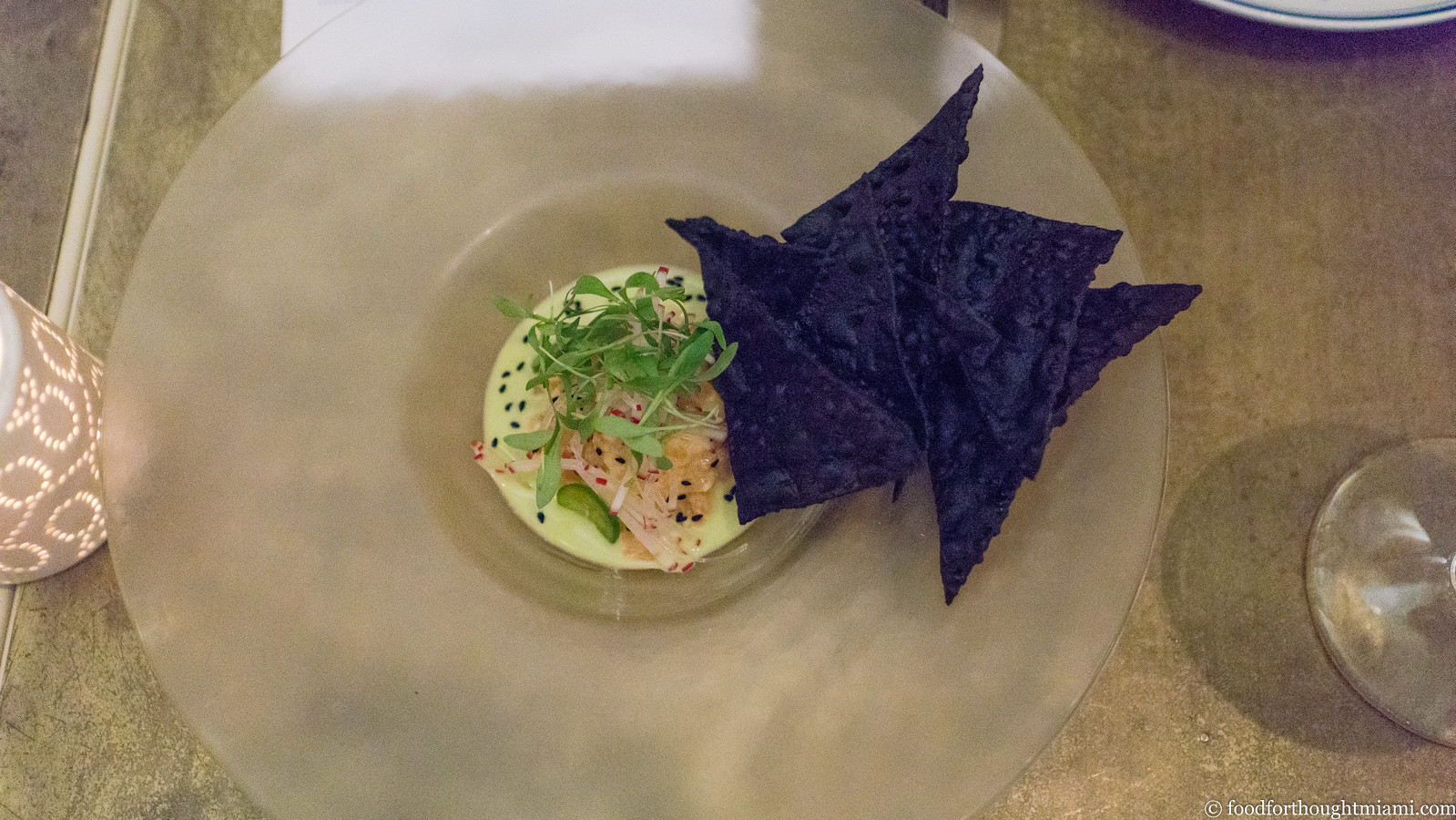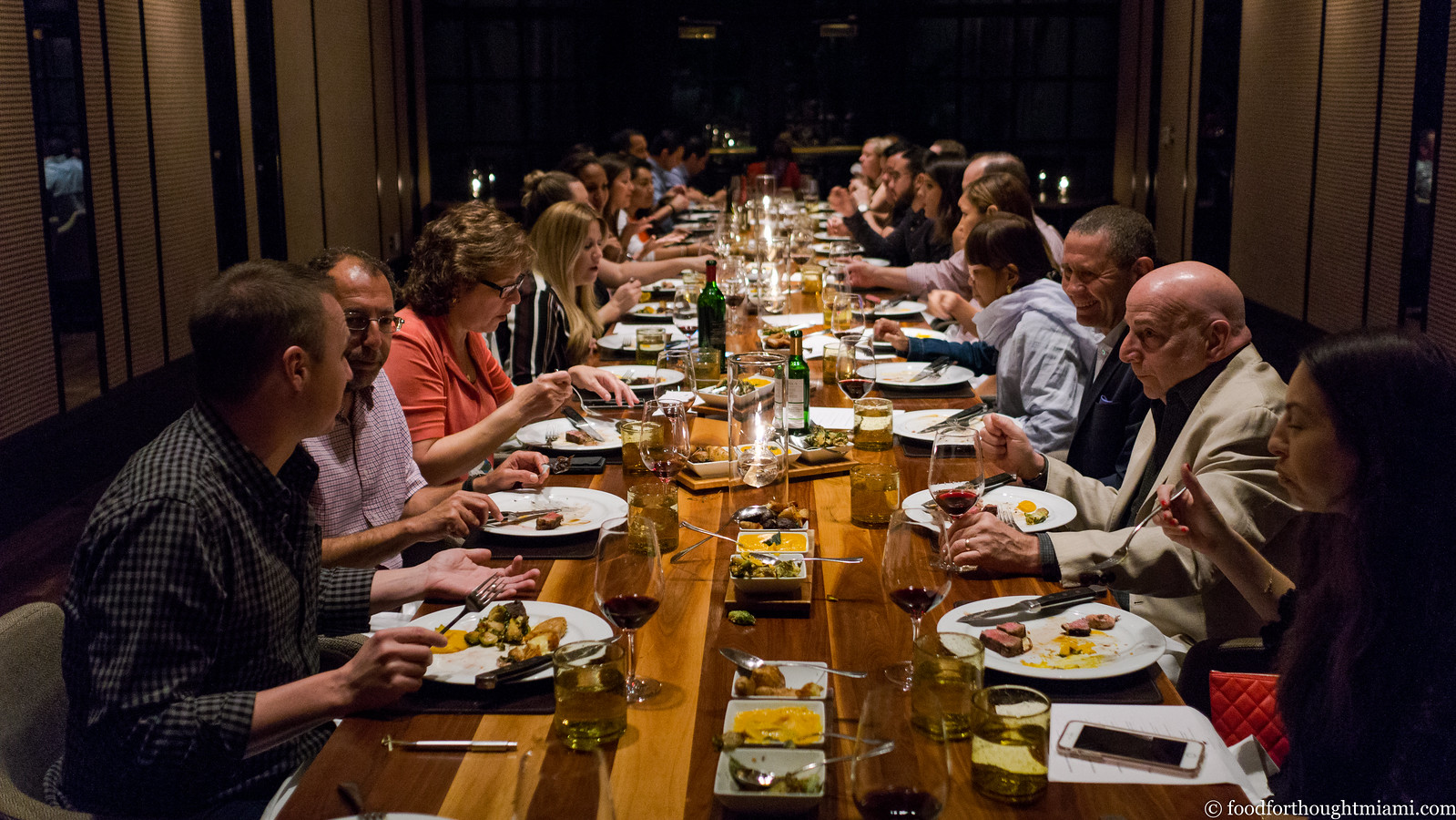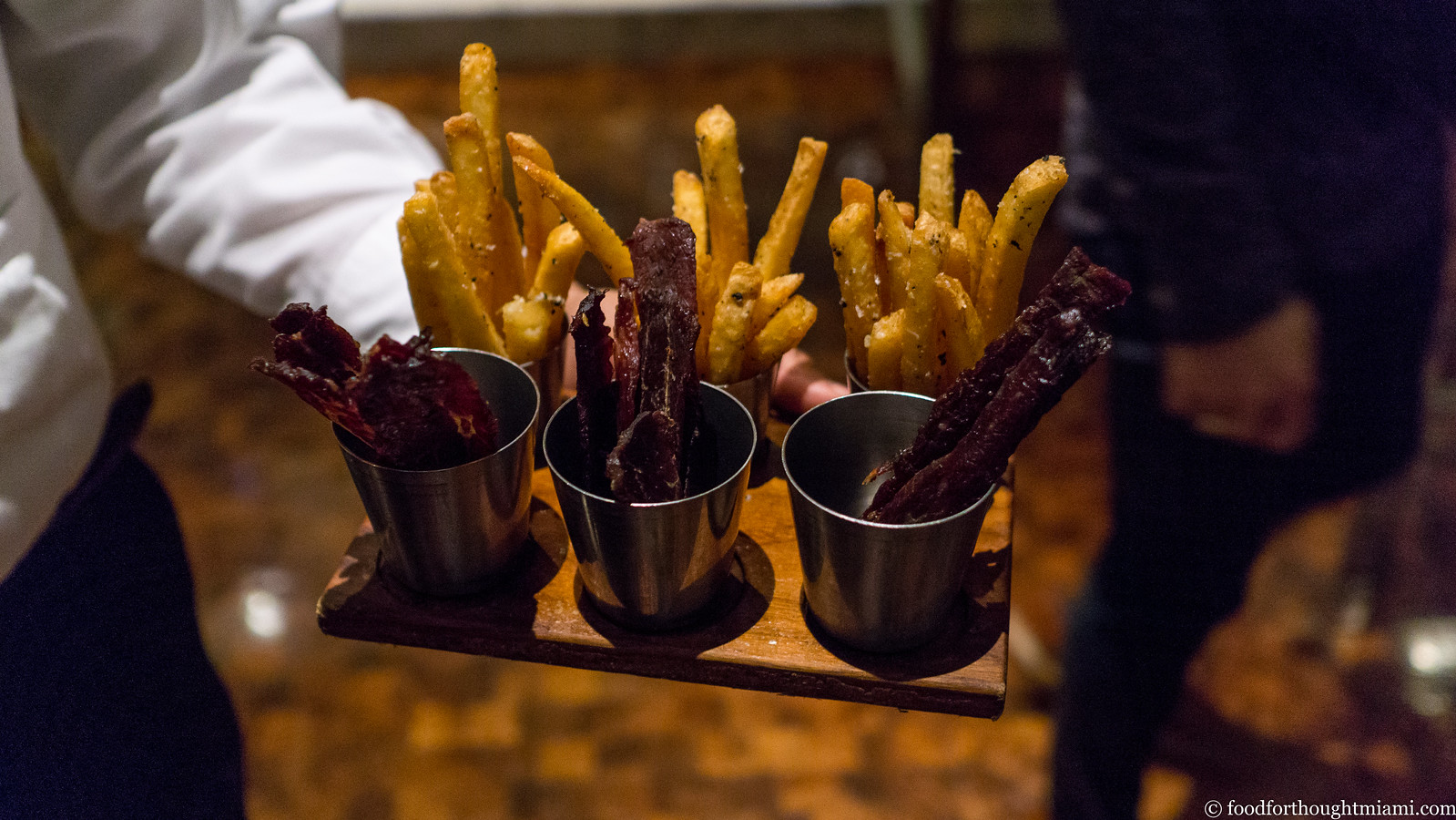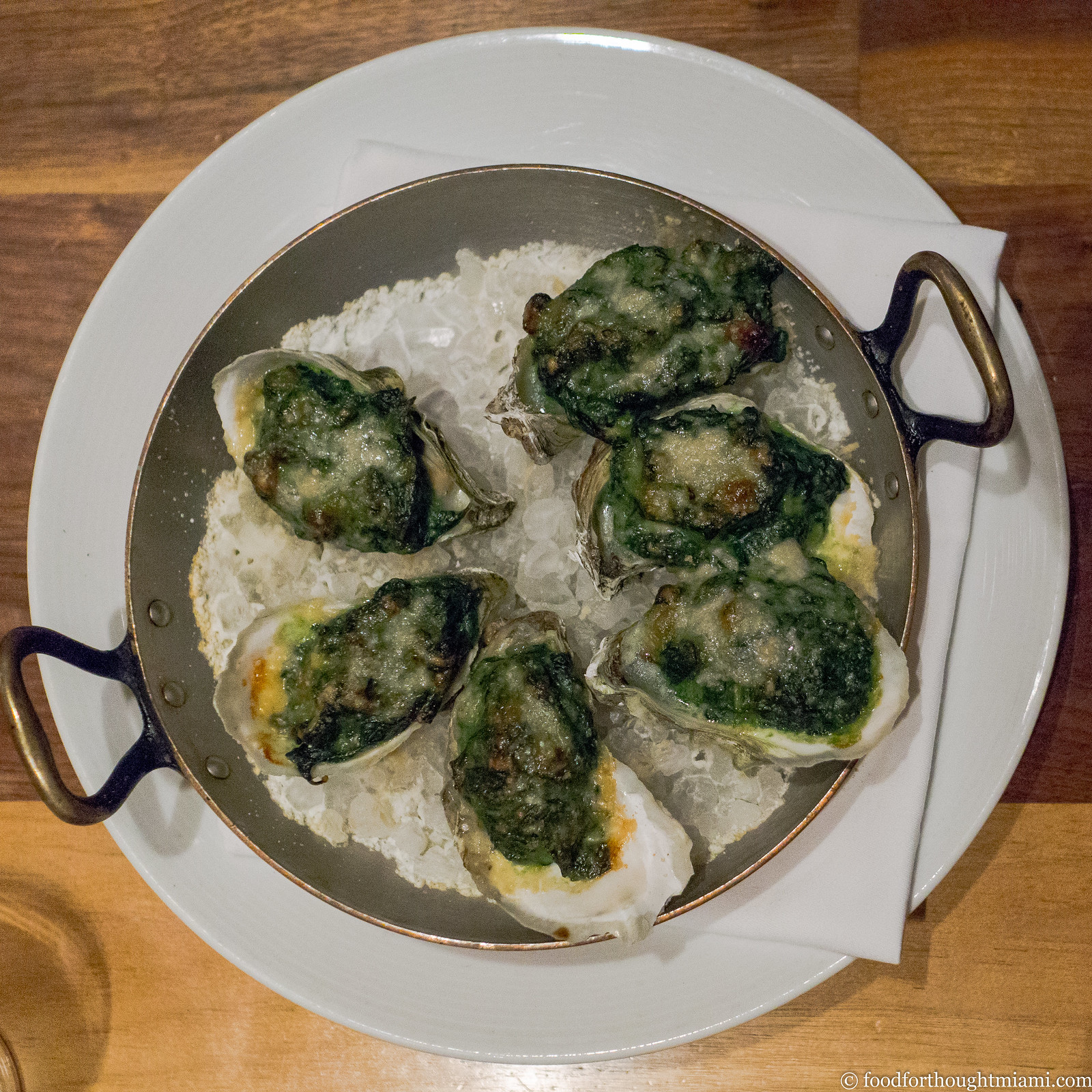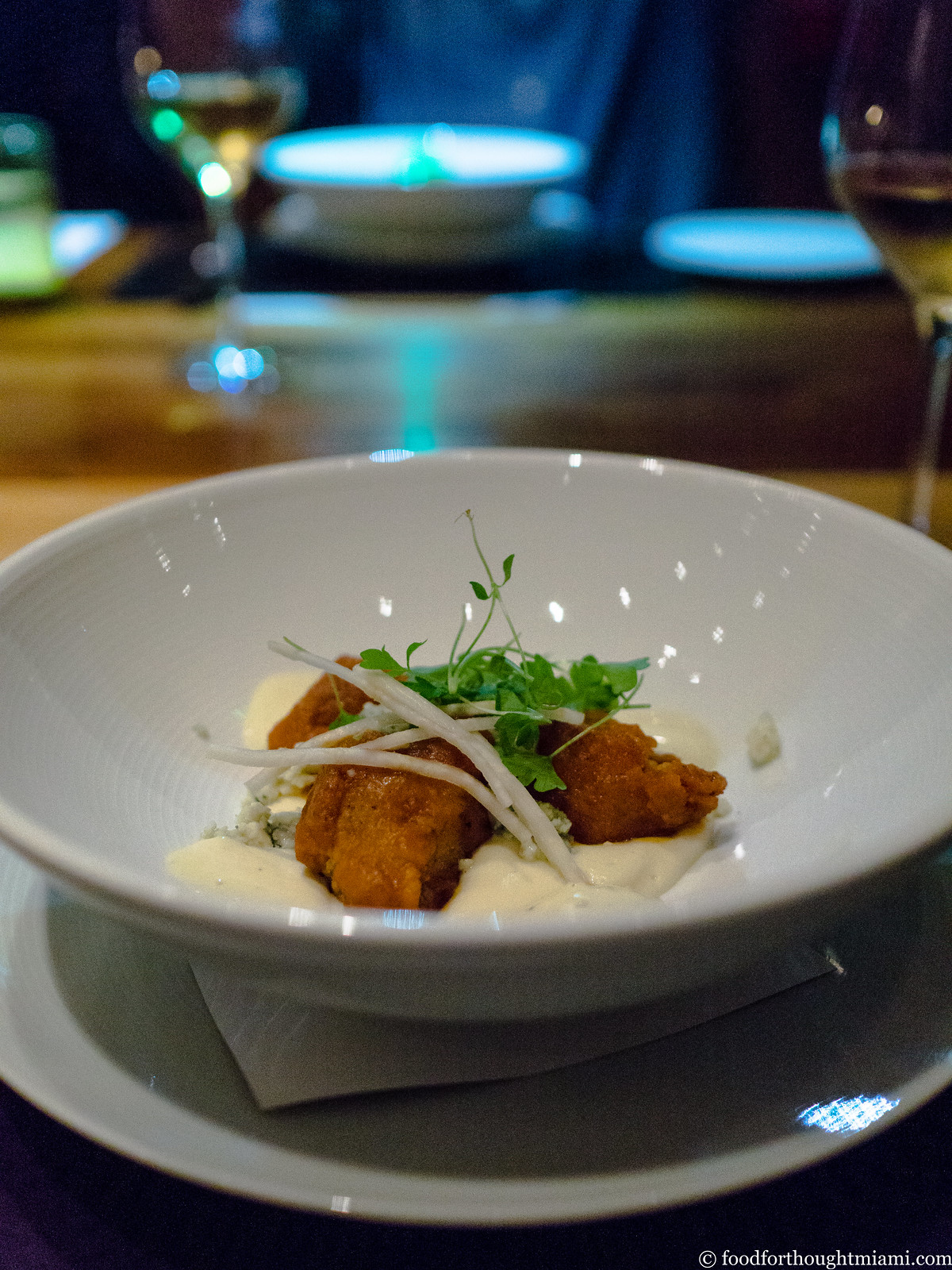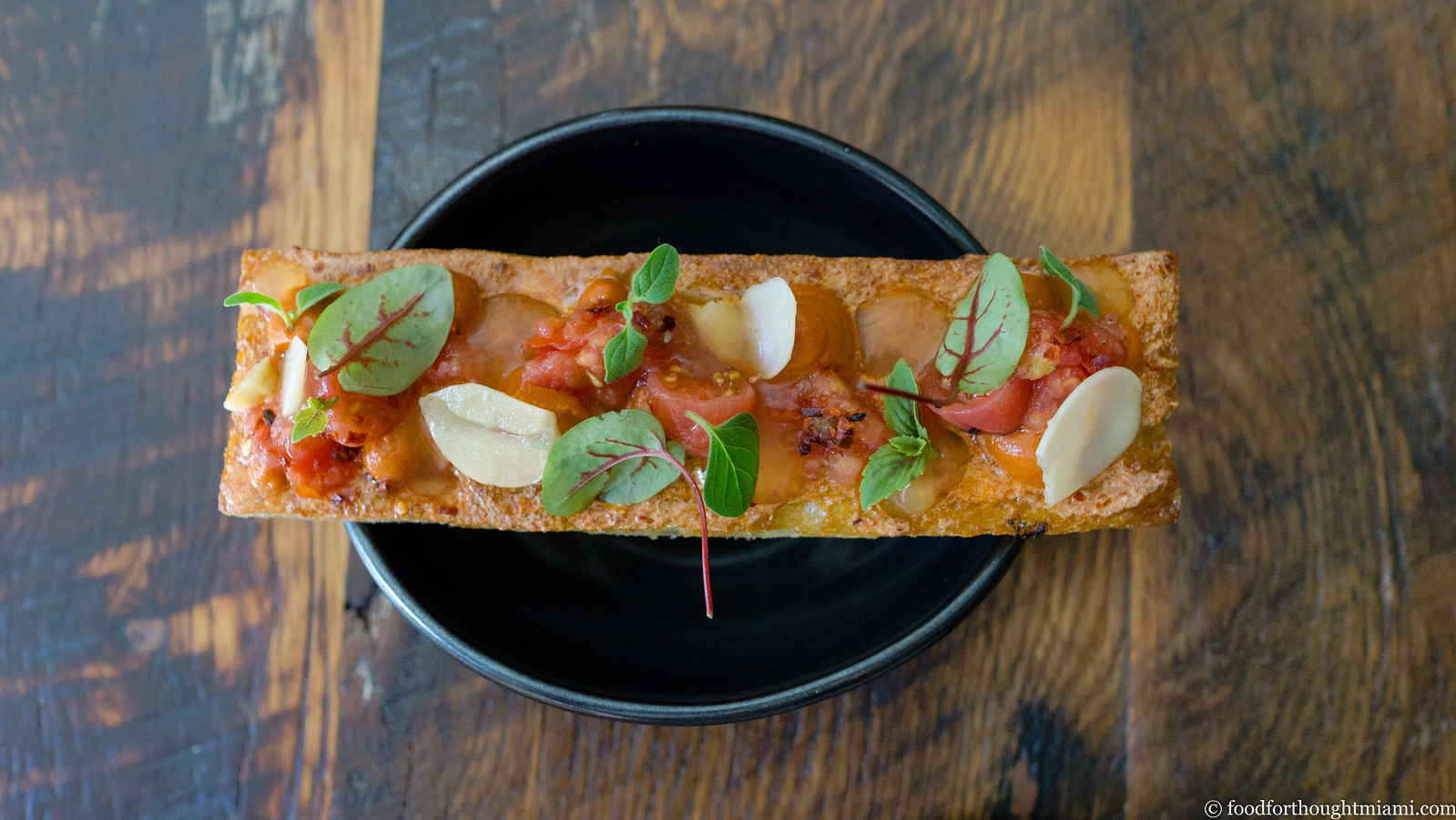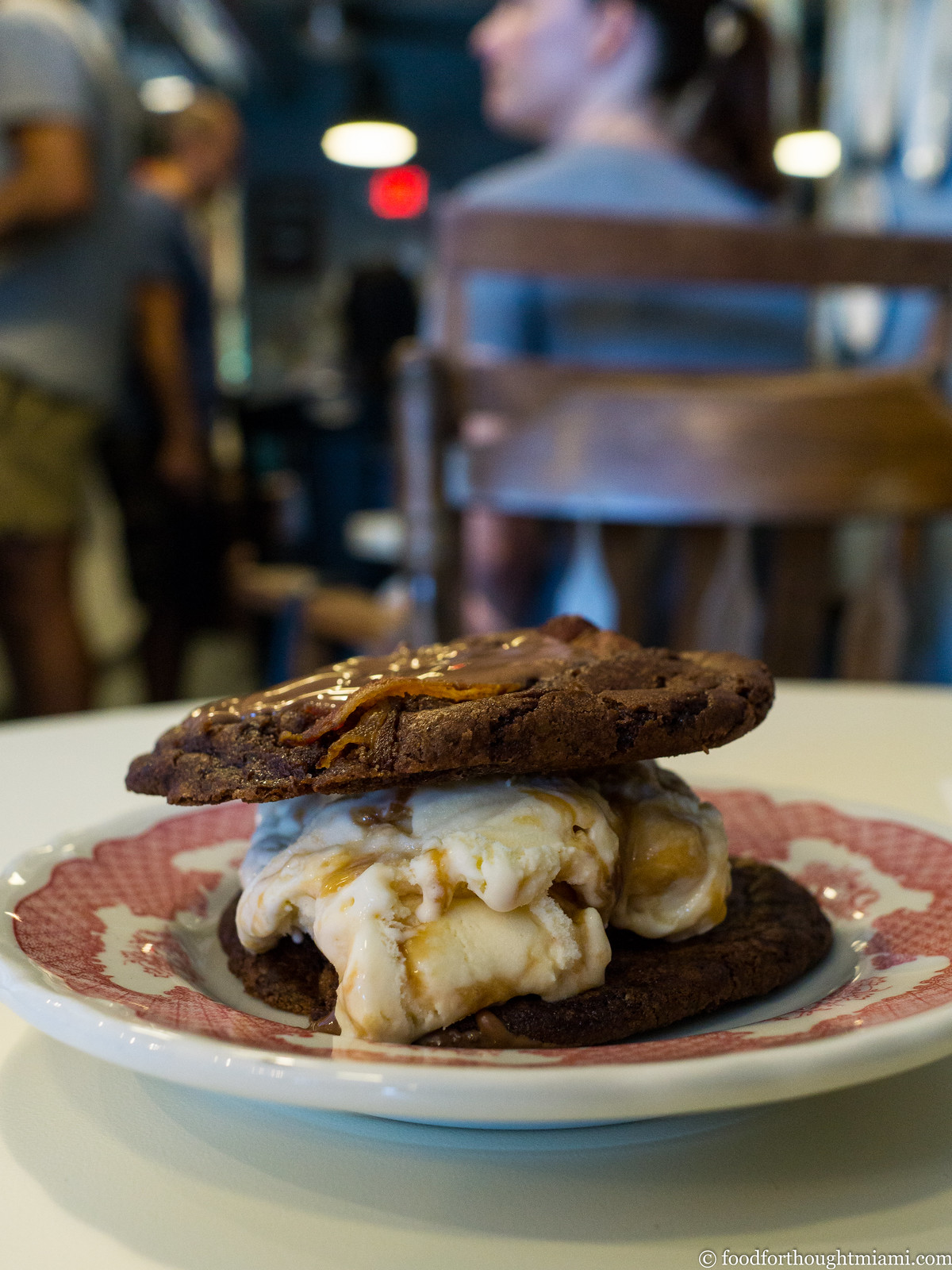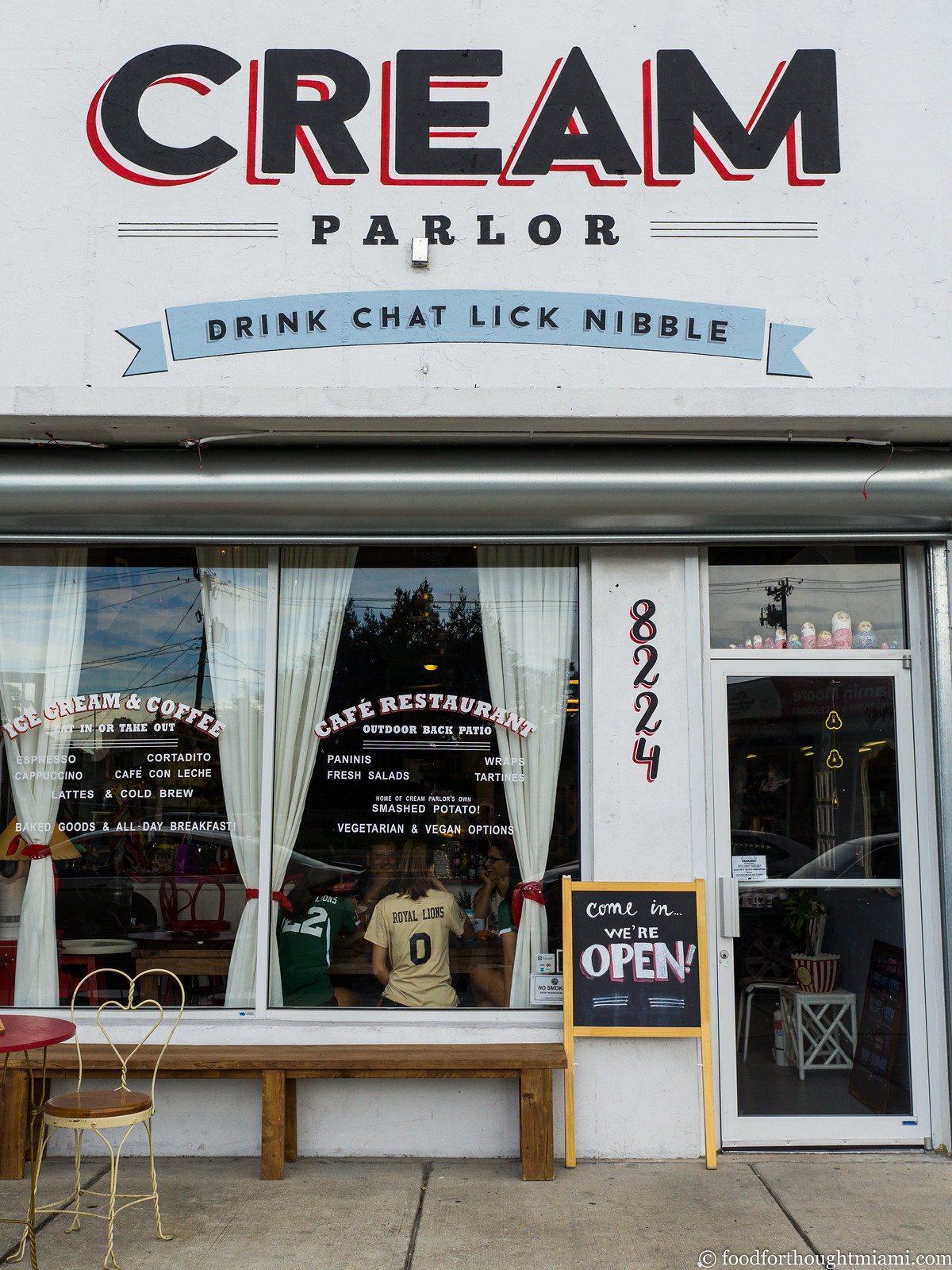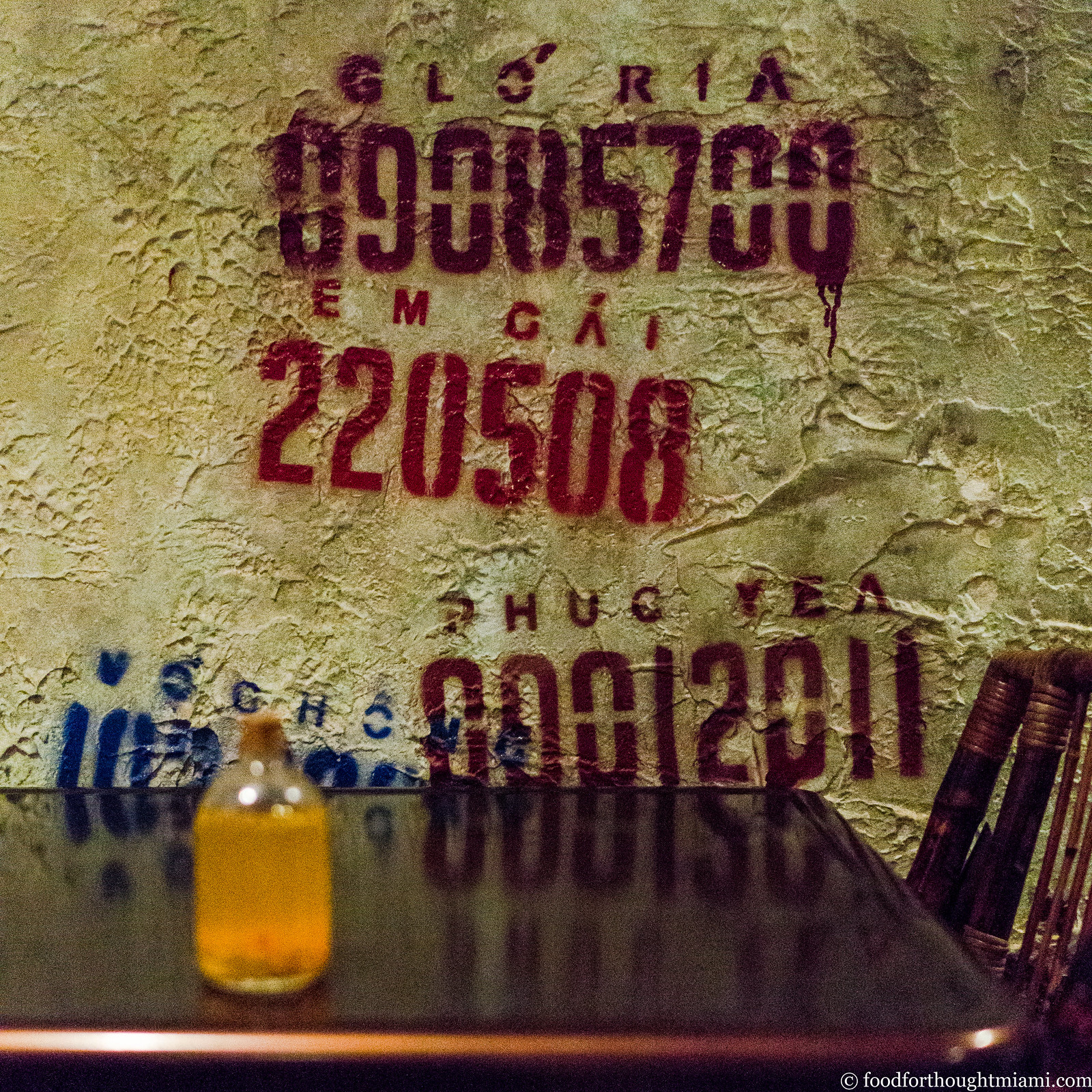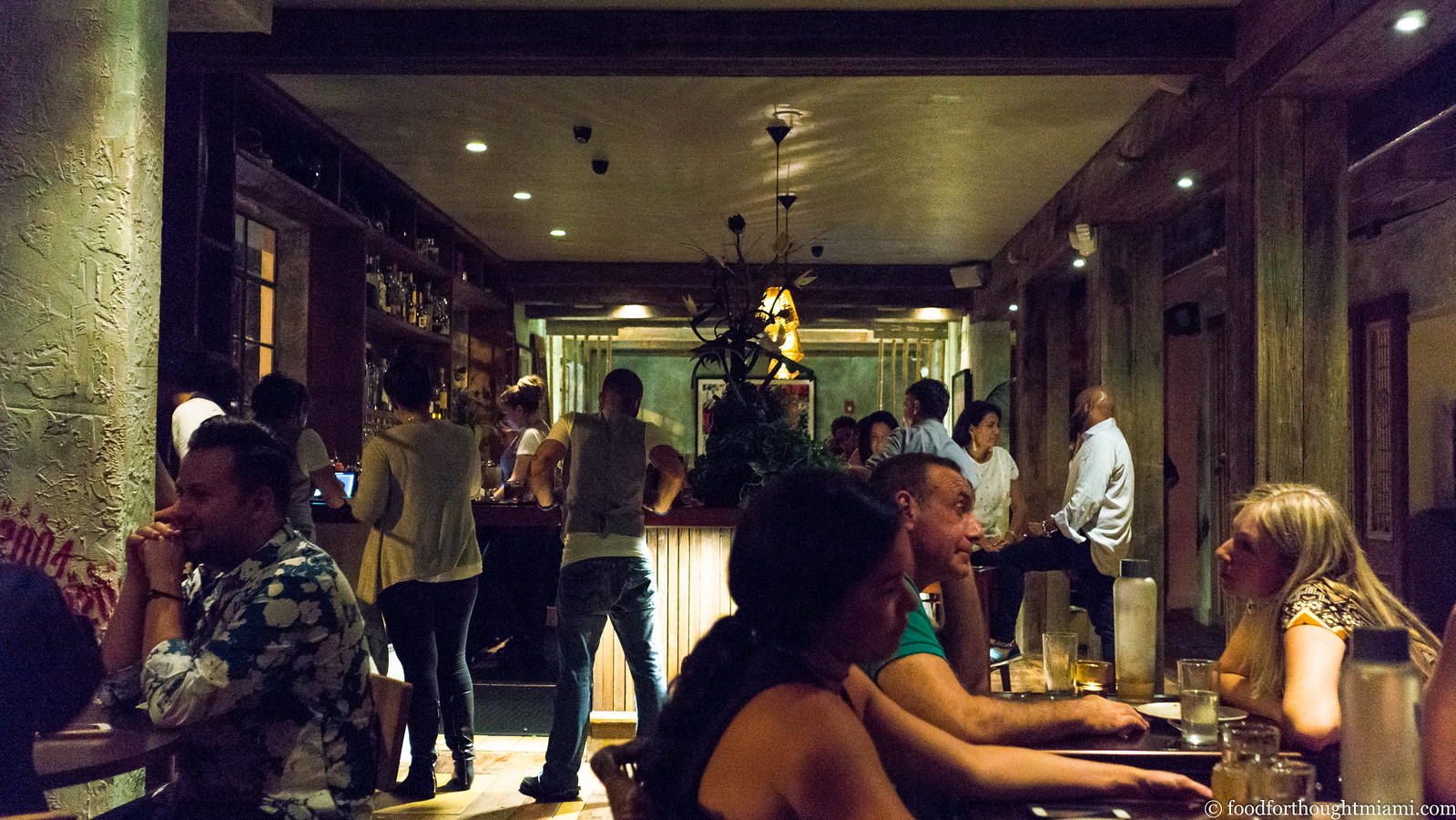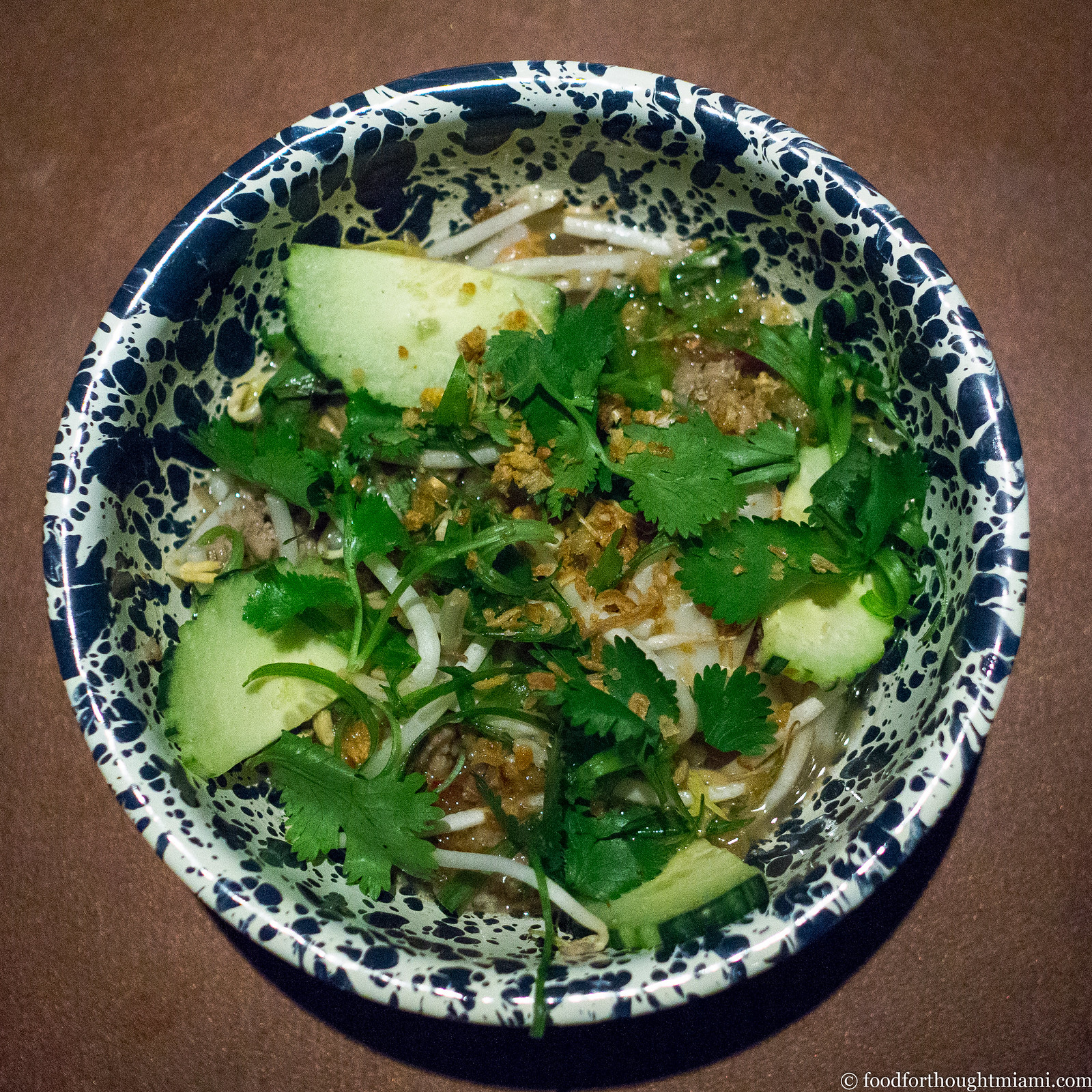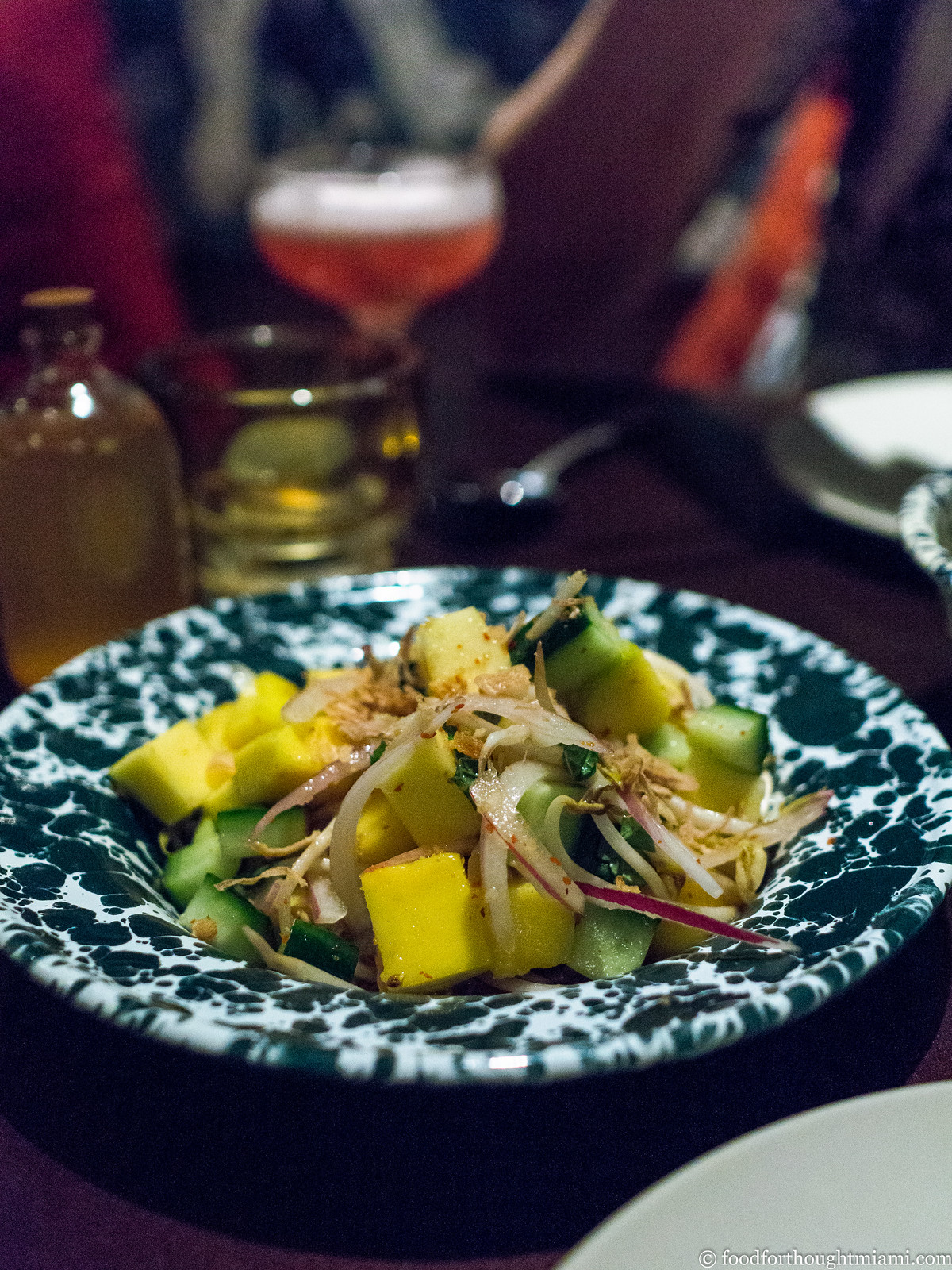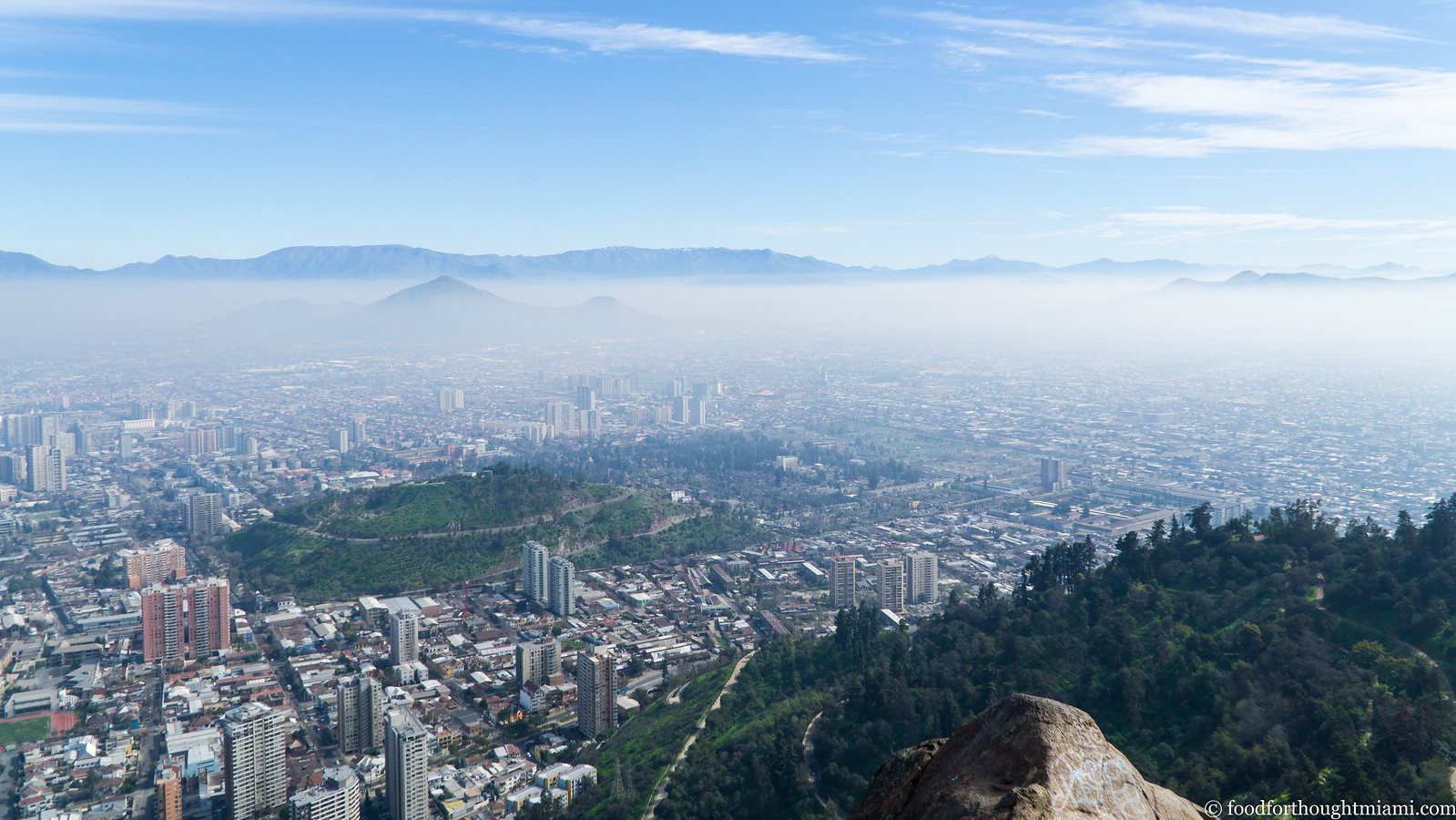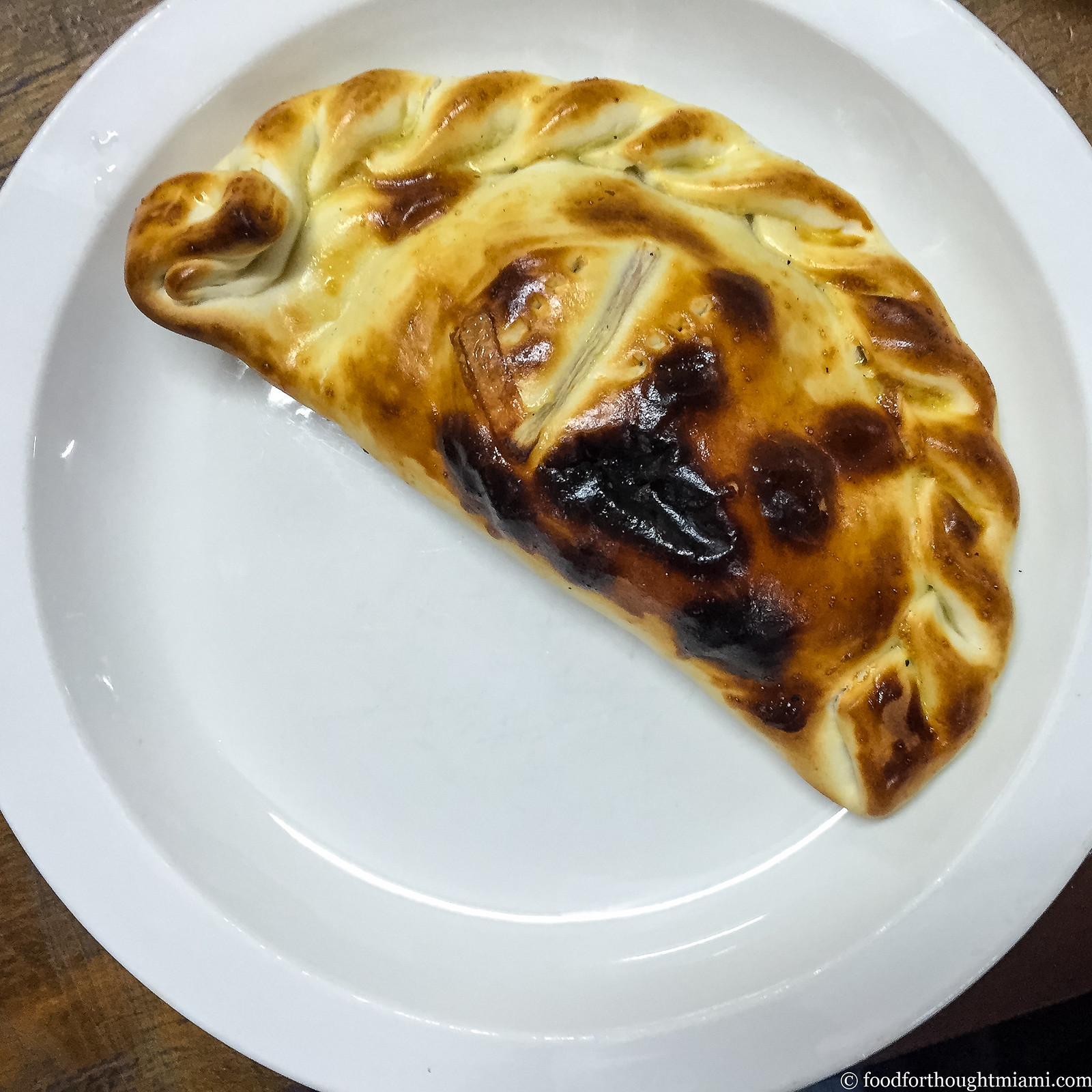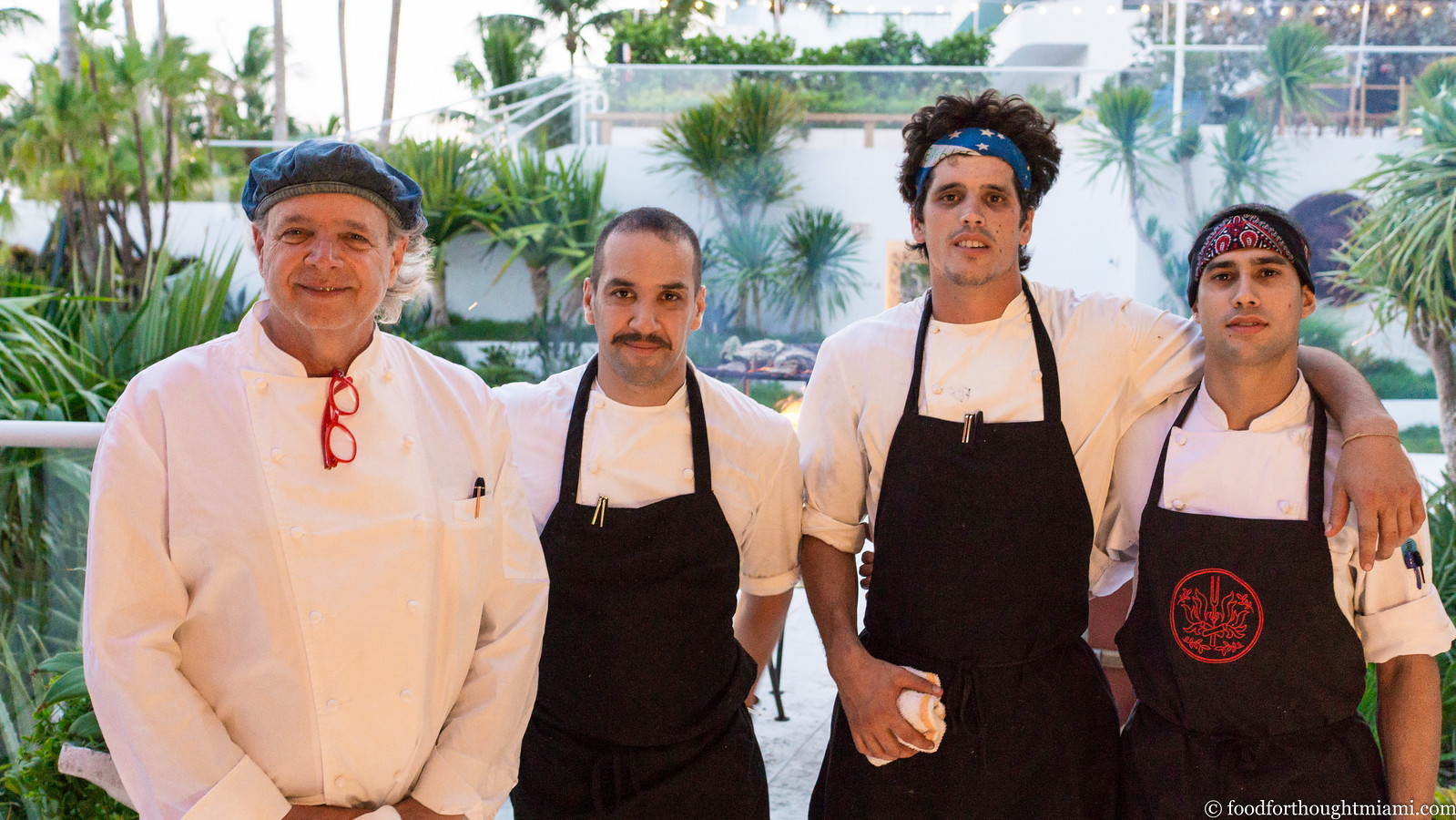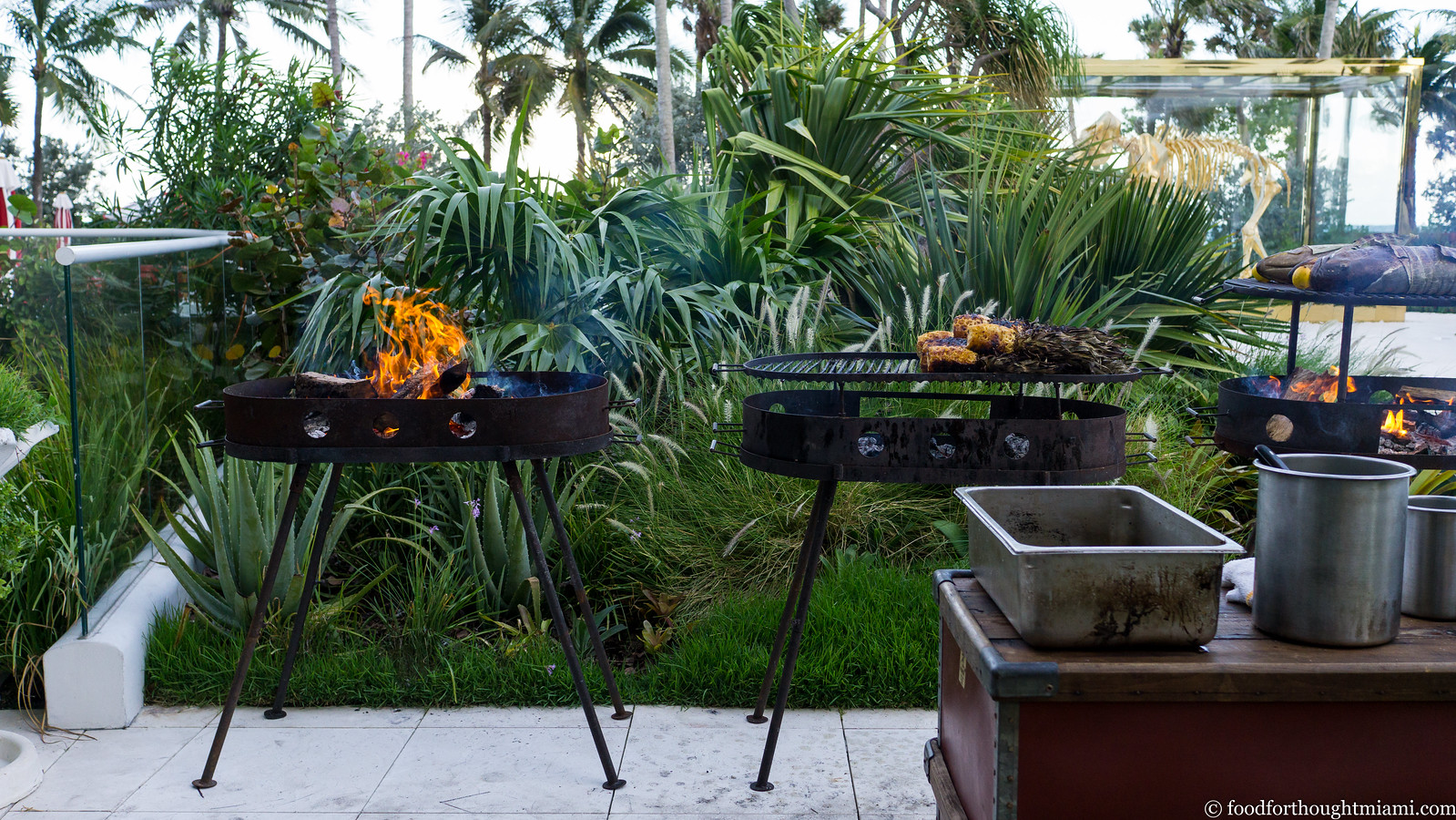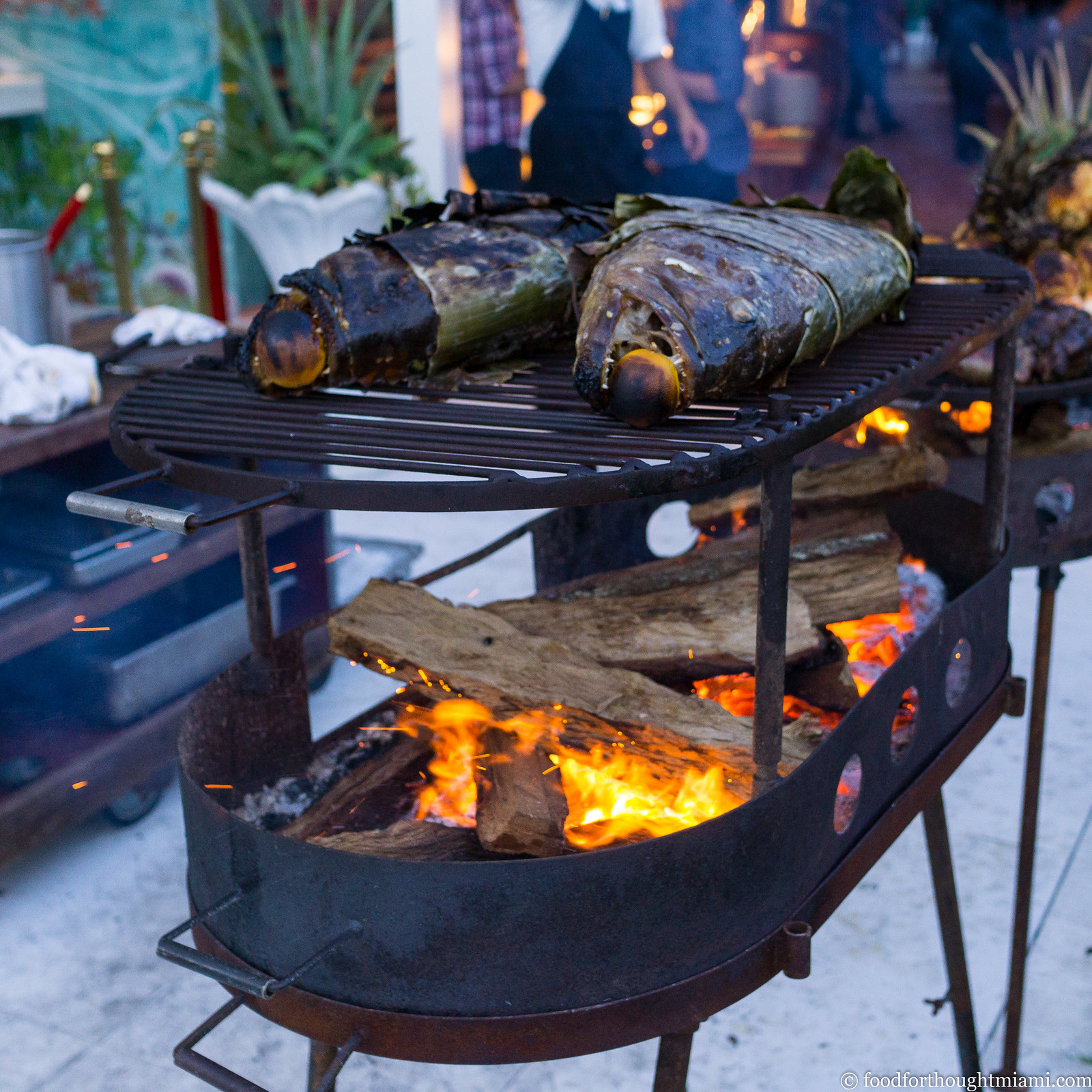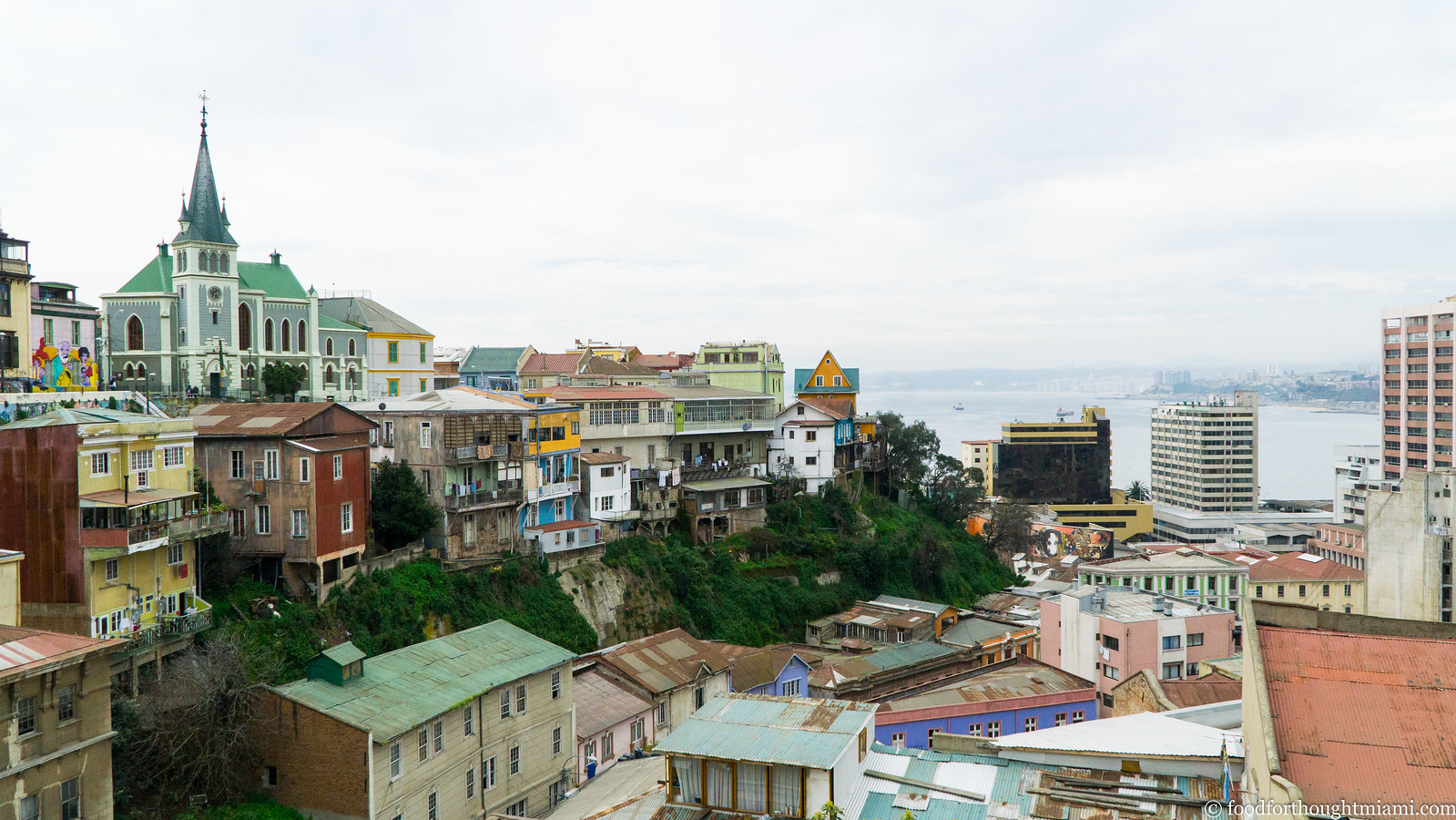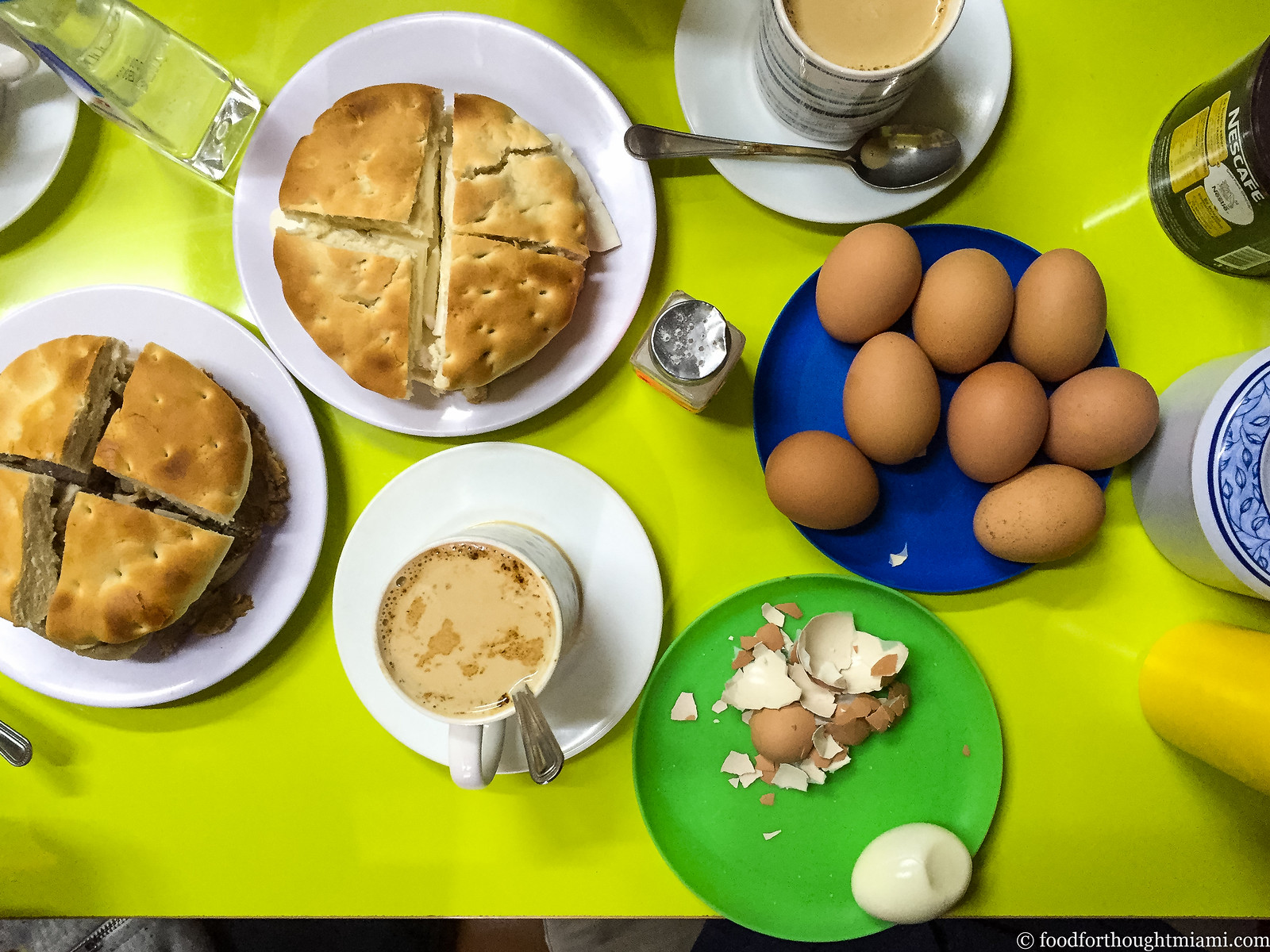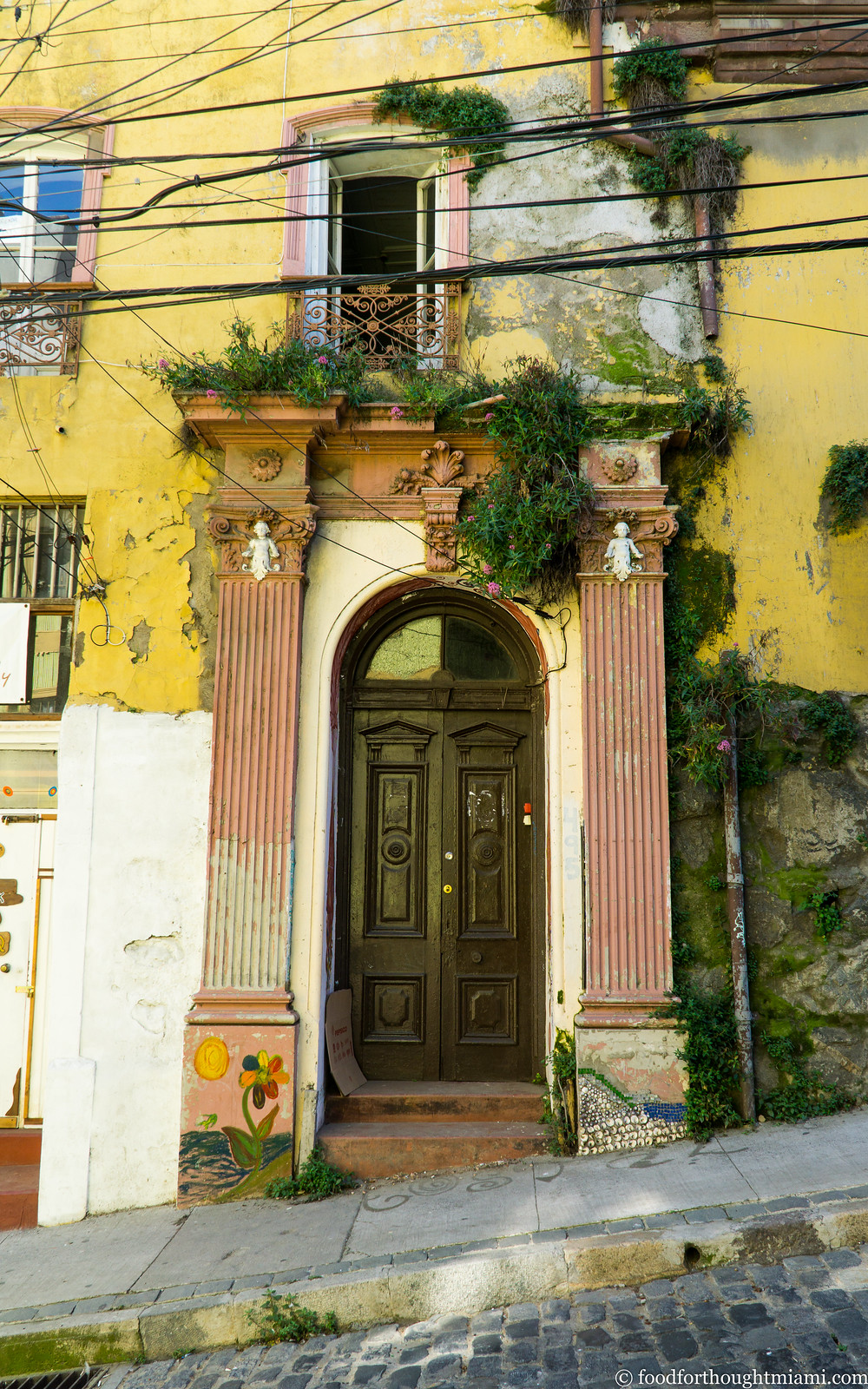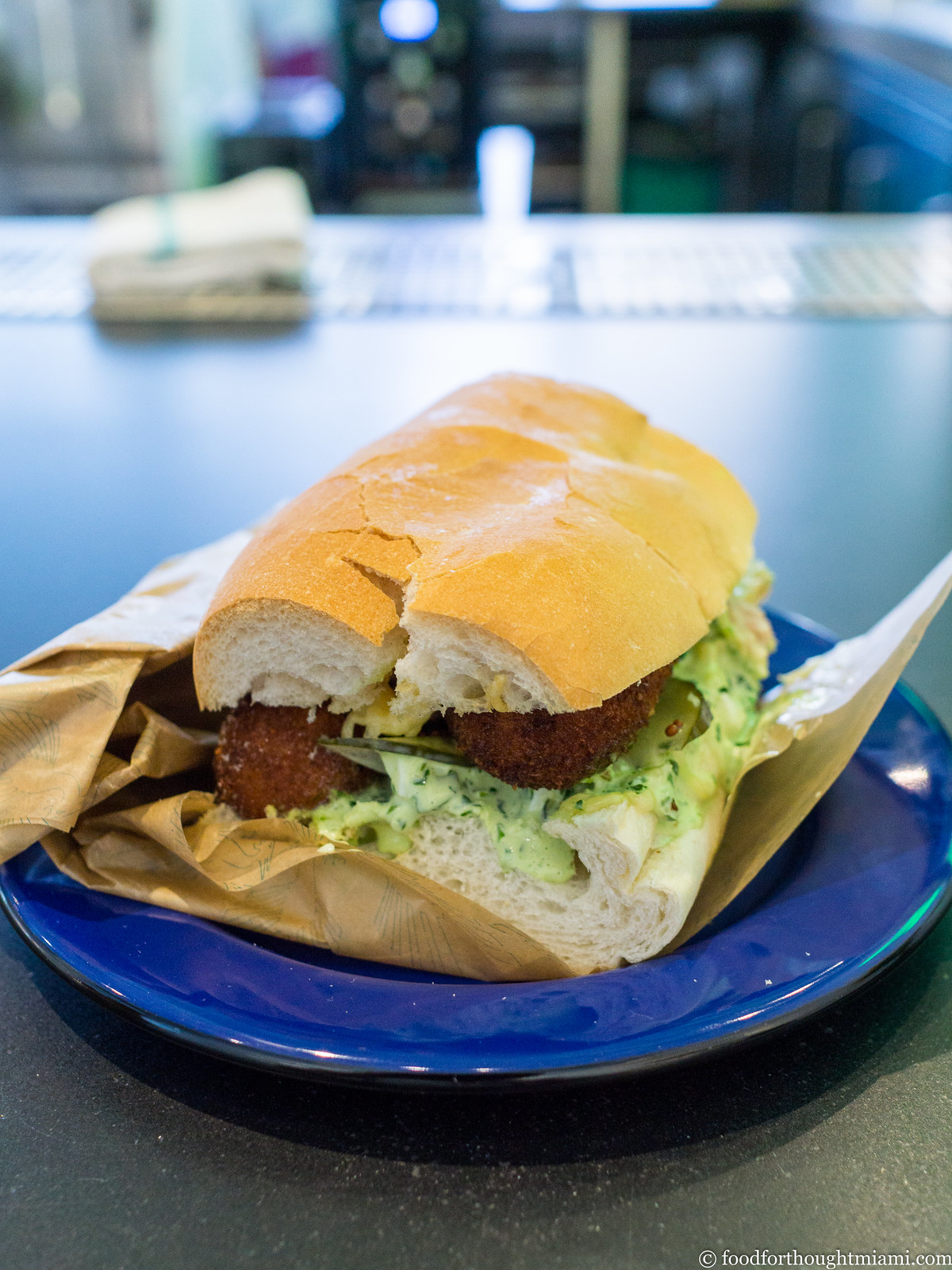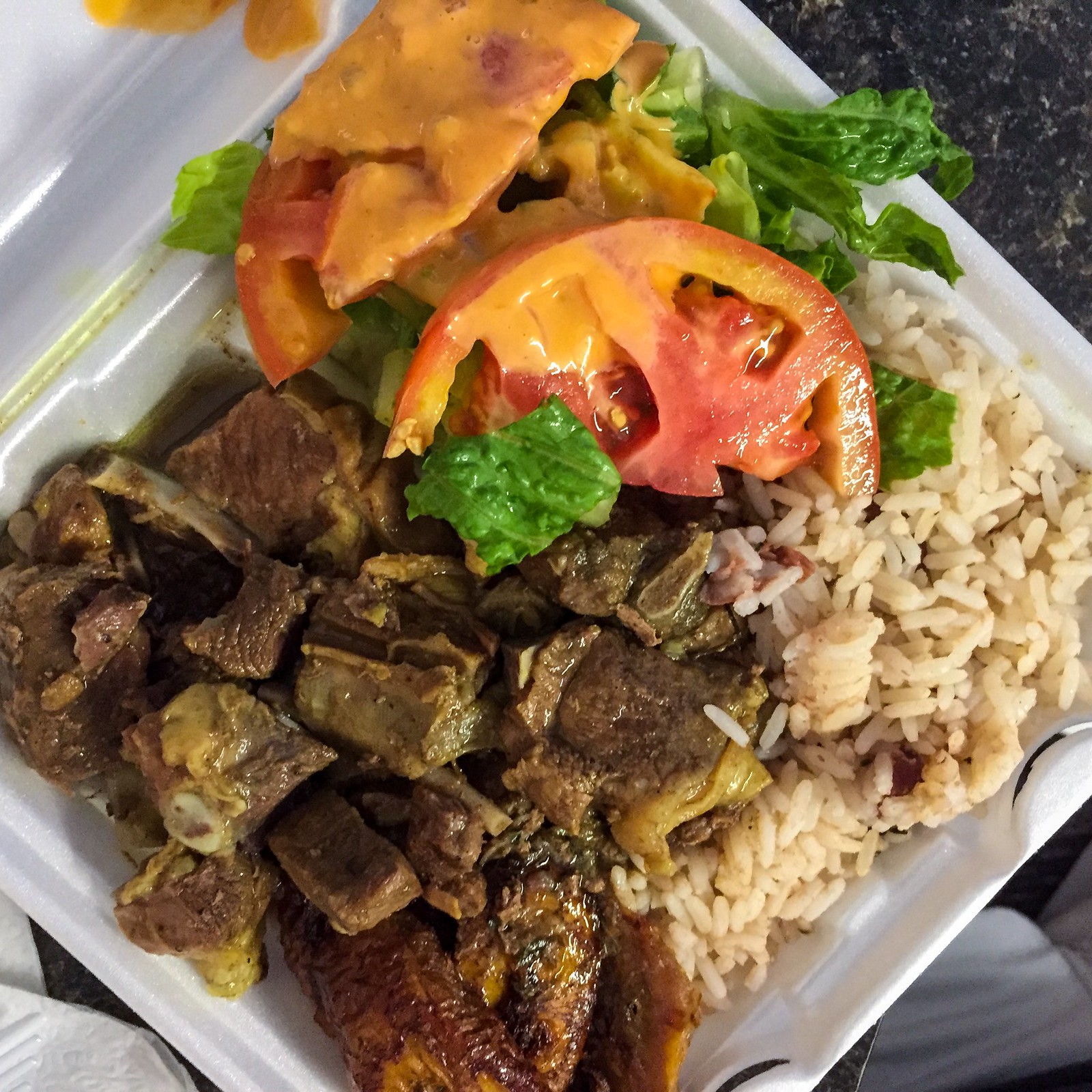Sunday, November 13, 2016
In Situ - San Francisco
In Situ, the new restaurant in the recently refurbished and reopened San Francisco Museum of Modern Art, is a bundle of contradictions. The chef is Corey Lee, whose tasting-menu flagship, Benu, just retained the three Michelin stars it was first awarded in 2014. But the highly regarded chef didn't create a single recipe for the restaurant. Rather, the menu consists of a rotating selection of other chefs' dishes from all around the world, which the In Situ kitchen sets out to faithfully recreate. In other words, it's a restaurant in the model of an art exhibition, with Lee as the curator.
In this and other ways, including the exhibition catalog-style menu, In Situ clearly advances the notion of chef as artist. But the manner by which it is implemented – with Lee and his crew duplicating the "artists'" creations – undermines the very notions of authorship and uniqueness that are generally thought of as essential to the distinction between "art" and "craft." While Lee is ostensibly in the role of curator and not creator, the lines become blurred: when was the last time you saw a museum curator break out his brushes and hang up his own canvas on the museum wall as the "Mona Lisa"?[1] What you will get here is at best a copy, though it may be a very good one.
Indeed, the very name is a contradiction: "in situ" refers to a site-specific artwork, one that is created for the location. Yet each of the dishes served at In Situ was created for and is usually served in some other restaurant.
All of which is to say this: In Situ is possibly the most thought-provoking restaurant experience I've had in years. But unlike many restaurant experiences that aim to be thought-provoking, this one was also a lot of fun and mostly really delicious.
(You can see all my pictures in this In Situ - San Francisco flick set).
A big part of the fun at In Situ is that the restaurant acts as both Star Trek transporter and Dr. Who time travel TARDIS telephone booth. Here, in one meal, you can sample dishes from thousands of miles away, and even from decades past – some of which may no longer even be available anywhere else.[2]
For instance, the lead-off item on the menu[3] during our visit comes from chef Wylie Dufresne. His restaurant in New York's Lower East Side, wd~50, was a mid-aughts "molecular gastronomy"[4] trendsetter. But I never managed to get there before it closed in 2014.
Yet here are Dufresne's "shrimp grits," a dish which subverts the classic Southern pairing, turning the shrimp themselves into the grits by chopping, cooking, finely grinding, and finally re-warming them with powdered freeze-dried corn, then garnishing with pickled jalapeños and a bright orange shrimp shell oil.
If I'm to be honest, one of the reasons I never ate at wd~50 is that I wasn't convinced I would have enjoyed an entire meal there: the place often gave me the impression that form was being elevated over substance, creativity over flavor. But that's another of the interesting things about In Situ: it's a chance to sample a chef's cooking (at least vicariously through the medium of Lee and crew), without the commitment of a full meal. Turns out, this dish was excellent: intense crustacean flavor, combined with a nostalgic creamy, nubby grits texture. Perhaps I misjudged. But In Situ offers a taste of what I missed.
We were in Kyoto a couple years ago, but did not go to Gion Sasaki, a kaiseki style restaurant that is a notoriously difficult reservation. So here is another "missed opportunity" dish. Tender, meaty chicken thighs are glazed with a delicate teriyaki sauce (not the gloppy syrupy stuff we get here, but a fine calibration of salty, tangy and sweet); concealed beneath them is a wobbly "onsen" egg (probably cooked in an immersion circulator rather than the traditional hot spring), mounted in a bed of crunchy lettuce, and dusted with tingly sansho pepper. It's Sasaki's version of "oyako," i.e. "parent and child" (chicken and egg), and it's superficially simple but elegantly balanced.
One of the challenges In Situ faces is finding dishes that can be replicated without access to all of the ingredients used by chefs whose restaurants may be thousands of miles away. Virgilio Martinez's cooking at Central in Lima, Peru is indelibly tied to indigenous products, many of which are found nowhere else in the world. So when he chose a dish for the In Situ menu, he had to do something that would "travel well." (More interesting tidbits in this conversation between Martinez and Lee captured by Lucky Peach).
His "Octopus and the Coral" is the result: plump octopus tentacles basted in a spicy rocoto chile paste, hidden beneath shards of silver savory meringues, dark grey rice crackers, and tufts of red seaweed, meant to appear like an octopus crouching within a coral-covered rock beneath the sea. It was a good dish, though not nearly as interesting as several dishes Martinez prepared for a dinner at Alter restaurant in Miami earlier this year.
(continued ...)
Thursday, November 10, 2016
sitting shiva and eating P.I.G.
Ugh. This is going to be one of those personal posts.
Even worse: it's going to be a political one.
And just to make it really atrocious: it's going to have a food-related tie-in at the end.
Sorry. But you've been warned.
I know there's nothing unique about my grief, but sometimes it feels a bit better to share it, so here goes.
Publicly, anyway, I've generally kept my political beliefs to myself. If someone wants to talk politics I'm glad to do so, but I've never been one to put bumper stickers on my car or signs in my lawn or spend my spare time telling other people how they ought to vote. And I've treated my online presence the same way. That's not because I'm one of those "stay in your lane" types who thinks that if you're generally known for something else (i.e., food), you're somehow obligated to shut up about politics. To the contrary, I have nothing but admiration for very prominent people with business interests potentially at stake – folks like Tom Colicchio and José Andrés and many others – who risk alienating a substantial portion of the population by speaking and acting on their beliefs. Just not my style.
Perhaps I've missed an opportunity to share my own political beliefs with the phalanxes of porn-bots and twitter eggs among my followers, but curiously, based on my twitter feed, it would largely seen like preaching to the choir, anyway. There's been lots of talk after this election of how we all live in "bubbles" that insulate us from contrary opinions, and I see what that means. Of the 624 people I follow on twitter, there are only a handful who I've chosen to follow for their political commentary; I'm here for the food (and the laughs, and the snarky comments). And yet, for this entire election cycle, my feed has read mostly like a political echo chamber, at least until the past couple days, when everyone seems to have a different opinion as to what went wrong and who's to blame.
But privately I've been worried about this election for months, and now I'm in mourning. That's an awfully strong word, but that's what it feels like right now. I think of a daughter who has to grow up in a country where misogyny and sexual assault are not only trivialized but effectively endorsed. I think of a son of draftable age with a hot-headed megalomaniac responsible for our foreign policy. I think of friends and loved ones who already feel in danger just because of how they look, or where they come from, or what they believe, or who they love, and who have seen the hate directed towards them normalized and ratified. I think of struggling working class voters who have been conned by a snake-oil salesman into thinking that he cares about fixing their problems, much less is capable of doing it. I think of the next four years, and I mourn.
But when my people mourn, what do we do? We sit shiva: we gather with family and friends, and of course, we eat. And that's what I intend to do this weekend. I'll be doing so Saturday afternoon at P.I.G. – my favorite local food event of the year, with some of my favorite people.
This year's celebration of porcinity organized by Chef Jeremiah Bullfrog includes locals Gabriel Ask (Faena), Aaron Brooks (Edge), Will Crandall (Izzy's), Babe Froman (Babe Froman Fine Sausages), Jimmy Lebron (27 Restaurant), Brian Mullins (Ms. Cheezious), Niven Patel (Ghee), Michael Pirolo (Macchialina), Patrick Rebholz (50 Eggs), Steve Santana (Taquiza), Dale Talde (Talde), Phuket "Cake" Thongsodchaveondee (Cake Thai Kitchen), Nicole Voltano (Dirt); visiting dignitaries Craig Deihl (Cypress in Charleston), Kyle Foster (Julep in Denver), Joe Sparatta and Lee Gregory (Southbound in Richmond, VA), plus sweets by Josh Gripper (The Dutch), Giselle Pinto (Sugar Yummy Mama), and Malcolm Prude (Proof); and libations orchestrated by Jenn Massolo of The Liquid Projects including cocktails from The Anderson, a gin bar from Rutte Distillery, and more.
I know that this seems like either a ridiculous way to make a political rant somehow food-related, or maybe conversely just a cynical way to make a food post topical, but seriously: this is how I'm trying to feel better. I just want to stuff my face and spend time with people I care about.
If you want to join in, there are still tickets left: get some at PIG Pork Is Good. $50 to eat and drink, and maybe feed your grief. Eating pork is not usually part of the shiva ritual, but we each observe in our own way.
Here are pictures from last year's event:
Even worse: it's going to be a political one.
And just to make it really atrocious: it's going to have a food-related tie-in at the end.
Sorry. But you've been warned.
I know there's nothing unique about my grief, but sometimes it feels a bit better to share it, so here goes.
Publicly, anyway, I've generally kept my political beliefs to myself. If someone wants to talk politics I'm glad to do so, but I've never been one to put bumper stickers on my car or signs in my lawn or spend my spare time telling other people how they ought to vote. And I've treated my online presence the same way. That's not because I'm one of those "stay in your lane" types who thinks that if you're generally known for something else (i.e., food), you're somehow obligated to shut up about politics. To the contrary, I have nothing but admiration for very prominent people with business interests potentially at stake – folks like Tom Colicchio and José Andrés and many others – who risk alienating a substantial portion of the population by speaking and acting on their beliefs. Just not my style.
Perhaps I've missed an opportunity to share my own political beliefs with the phalanxes of porn-bots and twitter eggs among my followers, but curiously, based on my twitter feed, it would largely seen like preaching to the choir, anyway. There's been lots of talk after this election of how we all live in "bubbles" that insulate us from contrary opinions, and I see what that means. Of the 624 people I follow on twitter, there are only a handful who I've chosen to follow for their political commentary; I'm here for the food (and the laughs, and the snarky comments). And yet, for this entire election cycle, my feed has read mostly like a political echo chamber, at least until the past couple days, when everyone seems to have a different opinion as to what went wrong and who's to blame.
But privately I've been worried about this election for months, and now I'm in mourning. That's an awfully strong word, but that's what it feels like right now. I think of a daughter who has to grow up in a country where misogyny and sexual assault are not only trivialized but effectively endorsed. I think of a son of draftable age with a hot-headed megalomaniac responsible for our foreign policy. I think of friends and loved ones who already feel in danger just because of how they look, or where they come from, or what they believe, or who they love, and who have seen the hate directed towards them normalized and ratified. I think of struggling working class voters who have been conned by a snake-oil salesman into thinking that he cares about fixing their problems, much less is capable of doing it. I think of the next four years, and I mourn.
But when my people mourn, what do we do? We sit shiva: we gather with family and friends, and of course, we eat. And that's what I intend to do this weekend. I'll be doing so Saturday afternoon at P.I.G. – my favorite local food event of the year, with some of my favorite people.
This year's celebration of porcinity organized by Chef Jeremiah Bullfrog includes locals Gabriel Ask (Faena), Aaron Brooks (Edge), Will Crandall (Izzy's), Babe Froman (Babe Froman Fine Sausages), Jimmy Lebron (27 Restaurant), Brian Mullins (Ms. Cheezious), Niven Patel (Ghee), Michael Pirolo (Macchialina), Patrick Rebholz (50 Eggs), Steve Santana (Taquiza), Dale Talde (Talde), Phuket "Cake" Thongsodchaveondee (Cake Thai Kitchen), Nicole Voltano (Dirt); visiting dignitaries Craig Deihl (Cypress in Charleston), Kyle Foster (Julep in Denver), Joe Sparatta and Lee Gregory (Southbound in Richmond, VA), plus sweets by Josh Gripper (The Dutch), Giselle Pinto (Sugar Yummy Mama), and Malcolm Prude (Proof); and libations orchestrated by Jenn Massolo of The Liquid Projects including cocktails from The Anderson, a gin bar from Rutte Distillery, and more.
I know that this seems like either a ridiculous way to make a political rant somehow food-related, or maybe conversely just a cynical way to make a food post topical, but seriously: this is how I'm trying to feel better. I just want to stuff my face and spend time with people I care about.
If you want to join in, there are still tickets left: get some at PIG Pork Is Good. $50 to eat and drink, and maybe feed your grief. Eating pork is not usually part of the shiva ritual, but we each observe in our own way.
Here are pictures from last year's event:
Tuesday, November 8, 2016
Cobaya Byblos with Chef Stuart Cameron
I've been meaning for some time to write about Byblos, a new-ish restaurant on South Beach in the old Shorecrest Hotel. A more expansive review will be forthcoming at some point, but the short version is this: despite my general aversion to South Beach hotel restaurants, especially those by big out-of-town restaurant groups, I think Byblos is putting out really flavorful, contemporary Middle Eastern food in a beautiful space and providing excellent service. Even shorter: I really like it.
In the meantime, here's a recap of the Cobaya dinner we held there last week with Chef Stuart Cameron, who came down from Toronto to cook for fifty of us guinea pigs who took over the upstairs dining room. I thought he and his crew did a very good job of going off-menu while still capturing the spirit of the place.
(You can see all my pictures in this Cobaya Byblos wtih Chef Stuart Cameron flickr set).
For a first bite, foie gras bonbons, rolled in nuts, drizzled with rose jam, and wrapped loosely in pashmak, a Persian sesame and sugar flavored cotton candy. For another little snack, a bowl of crisp-fried slivered baby artichokes, paired with an herb-infused tahini tarator sauce.
A round of raw dishes inspired by Lebanese kibbeh nayeh followed. The salmon nayeh featured diced pink salmon swimming in a jalapeño dressing, the spice level amped up even further by a green schug (a Yemenite chile paste). Even better was the grass-fed steak tartare, enriched with a silky argan oil aioli, warmed with Fresno chile peppers, brightened with dried mint, and given some textural contrast with a shower of crispy shallots. It was excellent. I like that Cameron does not shy away from spicy and bold flavors, while still keeping them in balance.
(continued ...)
Tuesday, November 1, 2016
best thing i ate last week: aji nigiri at Myumi
There's been a deficit of "best thing I ate last week" posts the past few weeks on account of travel – Seattle a couple weeks ago, including a wonderful return to Willows Inn, and San Francisco this past weekend. Let's try to fill in the gaps. Since I already wrote about our last Cobaya dinner with Gabe Fenton at Bourbon Steak, and will hopefully get around to writing about Seattle and San Francisco shortly, b.t.i.a.l.w. honors for the week before last goes to a bite from an omakase meal at Myumi, now situated in Wynwood Yard.
I wrote about my first visit to Myumi last year. The quick version: an omakase-only sushi tasting menu, served out of a truck, of surprisingly great quality. And my latest experience was every bit as good as my first. The highlights included shima aji with a nice snap to the flesh, meaty steelhead trout, salted and peppered and seared, and one of my favorite fish, the silver-skinned, polka-dotted kohada, lightly cured in vinegar.
But maybe my favorite bite among the ten courses (for $60) was this nigiri of aji, the pleasantly oily, fatty fishiness of the minced horse mackerel counterbalanced by the zing of ginger and scallion, then topped with toasted sesame seeds.
(You can see the full set of pictures from my most recent meal at Myumi in this Myumi - Wynwood flickr set).
Monday, October 24, 2016
Cobaya Gabe at Bourbon Steak
It's hard for me to believe it's been six years. But sure enough, it's been that and then some since our first Cobaya dinner with Chef Gabriel Fenton of Michael Mina's Bourbon Steak in Aventura, back in May 2010. That was only our sixth experiment, and in our eagerness to push chefs to work outside of their comfort zones, we told Gabe that he could cook whatever he wanted – as long as it wasn't steak. It was our bit of rebellion against the then-common trend of big-name chefs opening nothing but steakhouses in Miami.[1]
It was a great dinner, but man, was that dumb.
We've been looking to make a repeat visit for some time, and it finally happened last week. This time around, we told Gabe – who I think is one of South Florida's most skilled chefs – he could really cook whatever he wanted.
That was smart.
(Full set of pictures can be seen in this Cobaya Gabriel Fenton flickr set).
We started the same way every meal at Bourbon Steak starts: with some of their outstanding duck fat fries, here, dusted with truffle and accompanied by some candied bacon. While we usually insist that everything at our dinners be off-menu, these (1) are not actually on the menu at B.S.; and (2) would be worth making an exception anyway. Also making the rounds as folks gathered at the bar was some hearty antelope chili, served with fingerling potato chips, and flavorful Florida grass-fed beef satay skewers.
Once we settled into B.S.'s private dining room, dinner started with oysters a few different ways: Wianno oysters on the half-shell, garnished with ponzu and a brunoise of green apple, and also with crispy shallot and a coin of chorizo (?); and, even better, a really excellent rendition of classic Oysters Rockefeller.
Next, something you wouldn't likely ever find on the menu at Bourbon Steak, but executed at the exact same level: buffalo sweetbreads. The delicate, cloud-like sweetbreads were encased in a crisp shell laced with hot sauce, and served over a silky celery root purée topped with crumbled Pt. Reyes blue cheese.
(continued ...)
Thursday, October 6, 2016
Boragó | Santiago, Chile
As I mentioned in Part 1 of my Chile travelogue, before we'd decided to visit Chile, I knew very little about the country's food. In fact, there was only one restaurant I could name: Boragó. Boragó's chef, Rodolfo Guzman, opened the restaurant in 2007 after taking an interesting path into the kitchen: he studied chemical engineering, went to culinary school when a broken ankle ended a career as a professional water-skier, then spent time working at Andoni Luis Aduriz's restaurant Mugaritz in Spain's Basque Country before returning home to open his own place.
It took several years, but eventually, Boragó drew the attention of the International Dining Mafia: it now ranks No. 37 on the "World's 50 Best Restaurants" list, and No. 4 among "Latin America's 50 Best Restaurants" – whatever the heck those rankings mean. I think the whole concept of these numerical rankings is goofy, before even addressing the many other valid criticisms lodged against the "50 Best" list. But it can still be a useful tool for finding restaurants, particularly in regions that don't get as much critical attention otherwise.
One of those criticisms is that the restaurants on the list tend to have a certain sameness to them: high-end, expensive tasting menus, chasing the same fashionable ingredient trends, plated according to the same aesthetic. On the surface, Boragó might seem to fall into that camp: another pricey, tasting-menu place. But from its inception, Boragó set out to explore the largely unheralded ingredients and cooking methods of Chile's native peoples, and it dives deep. When you order the "Endemíca" tasting menu at Boragó, you are given not a menu, but a map: literally, a map of Chile, stretching along the Pacific coast of South America from the northern desert of Atacama to the Tierra del Fuego in the south, the last stop before Antarctica.
My recap here reconstructs what I have gathered about our meal from the contemporaneous descriptions as they were presented (which came at us in a mix of English and sometimes rapid-fire Spanish, depending on who brought the dish to the table), Instagram posts from Chef Guzman, and some independent research after the fact.
(You can see all my pictures in this Boragó - Santiago, Chile flickr set).
A "chilenito" is usually a sweet layered cookie like an alfajor filled with manjar (milk caramel, a/k/a dulce de leche); but here, as the first bite of the meal, it took the form of a thin, crisp cracker layered with creme fraiche, tart sea strawberry, and as the top layer, a preserved edible leaf. Sea strawberry would be the first of many ingredients I'd never encountered before. Called "frutilla de mar" in Chile, it's a coastal succulent with a tangy-sweet flavor that is indeed similar to strawberry, with a hint of salt.[1]
Even with after-the-fact googling, I couldn't figure out why this dish was called "chuchum" on the menu we received after the dinner. Served balanced on some branches, it was like a miniature tart in a potato shell with layers of locos (Chilean abalone), creme fraiche and membrillo.
The next course was served in a wide ceramic bowl, which was brought to the table wrapped in cloth. Inside the bowl was a "chupe" – a stew – of wild mushrooms from Quintay, a town on the Pacific coast due west from Santiago. At the base of the bowl was a thick purée of the richly flavored mushrooms, which had been hung over embers for five hours. Arranged above the purée were several pickled and dehydrated leaves. The server finished the dish by pouring into the bowl whey from pajarito (kefir?) yogurt which had been infused with eucalyptus. This was like the flavors of a forest, concentrated in one bowl: the earthy, meaty mushrooms, their flavors deepened over the smoke; the pickled leaves; the woodsy scent of eucalyptus, all of it pulled together in the lactic tang of the whey. It was a unique and memorable dish.
(continued ...)
It took several years, but eventually, Boragó drew the attention of the International Dining Mafia: it now ranks No. 37 on the "World's 50 Best Restaurants" list, and No. 4 among "Latin America's 50 Best Restaurants" – whatever the heck those rankings mean. I think the whole concept of these numerical rankings is goofy, before even addressing the many other valid criticisms lodged against the "50 Best" list. But it can still be a useful tool for finding restaurants, particularly in regions that don't get as much critical attention otherwise.
One of those criticisms is that the restaurants on the list tend to have a certain sameness to them: high-end, expensive tasting menus, chasing the same fashionable ingredient trends, plated according to the same aesthetic. On the surface, Boragó might seem to fall into that camp: another pricey, tasting-menu place. But from its inception, Boragó set out to explore the largely unheralded ingredients and cooking methods of Chile's native peoples, and it dives deep. When you order the "Endemíca" tasting menu at Boragó, you are given not a menu, but a map: literally, a map of Chile, stretching along the Pacific coast of South America from the northern desert of Atacama to the Tierra del Fuego in the south, the last stop before Antarctica.
My recap here reconstructs what I have gathered about our meal from the contemporaneous descriptions as they were presented (which came at us in a mix of English and sometimes rapid-fire Spanish, depending on who brought the dish to the table), Instagram posts from Chef Guzman, and some independent research after the fact.
(You can see all my pictures in this Boragó - Santiago, Chile flickr set).
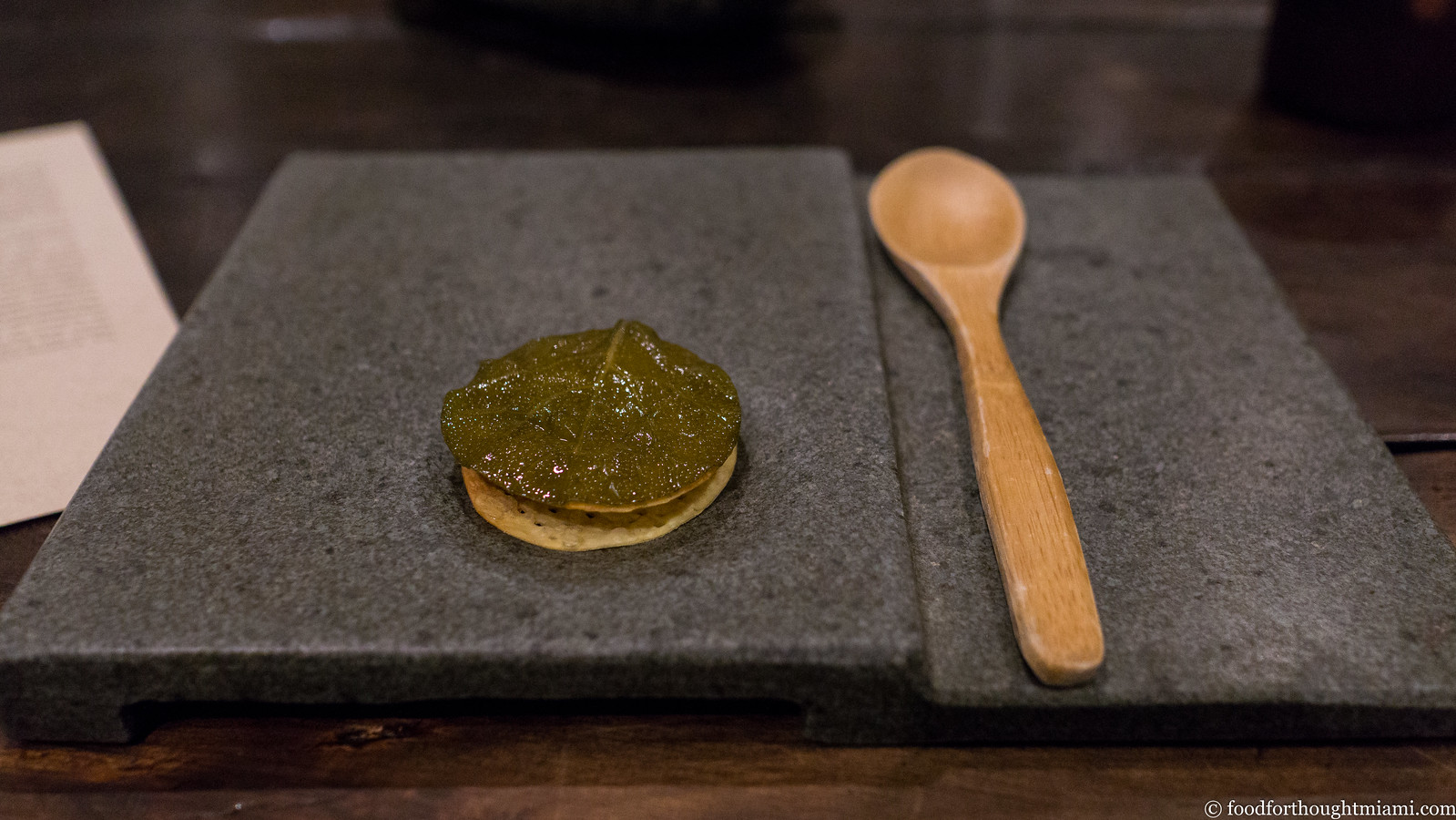 |
| chilenito |
 |
| chuchum |
 |
| chupe de hongos de Quintay |
(continued ...)
Monday, October 3, 2016
best thing i ate last week: pan con tumaca at Alter
A recent twitter exchange hit on a nugget of truth: more often than not, when a dish is "revisited" or "reinvented" (or worse, "deconstructed"), the end result pales in comparison to the original.
The classic Spanish snack, pan con tumaca (a/k/a pan con tomate or pa amb tomàquet), is a simple thing: grilled or toasted bread, rubbed with raw garlic and tomato, drizzled with olive oil, and sprinkled with salt. And yet with the right ingredients – crusty bread, ripe juicy tomato, fruity peppery olive oil – it is magically good, and difficult to improve upon.
The version I had this weekend at Alter, though, manages it. A thin plank of sourdough, golden on its surface but with still a whisper of tenderness at its center. A daub of tomato butter, warmed with Aleppo pepper. Soft, crushed cherry tomatoes, bleeding their juices. Slivers of pickled garlic, as thin as Paulie cut in prison. Red vein sorrel – pretty, sure, but also providing a bit of grassy, tart contrast.
Unfortunately, Saturday was the last lunch service at Alter, which is too bad: the 5-course lunch tasting for $39 was one of the best meals you will ever find at that price. (You can see pictures of the whole meal in this Alter - Lunch flickr set; the pan con tumaca was an extra sent out by the kitchen). But the trade-off will be a reinvigorated focus on dinner service at Alter, including an upcoming addition of some grilling stations outside to do some live fire cooking. Good things coming.
Alter
223 NW 23rd Street, Miami, Florida
305.573.5996
Tuesday, September 27, 2016
best thing i ate last week: ice cream sandwich at Cream Parlor
Sometimes, it's the simple things that deliver immense satisfaction. I'd just finished brunch at Pinch Kitchen on Biscayne Boulevard, and noticed that the new ice cream place across the street, Cream Parlor, had finally opened. I took a peek inside, and was pleasantly surprised at what a charming little place it was, loaded with vintage tchotchkes on the walls, mismatched coffee mugs, and flowery grandma plates. It also turns out to be a lot more than just an ice cream shop: there's a pretty extensive breakfast menu, plus sandwiches, tartines, salads, and healthy-sounding vegetable dishes like curried chickpeas and sriracha lentils.
The ice cream flavors veer more playful rather than artisanal: Red Velvet Cake, Prince-inspired Purple Rain, technicolor-hued Unicorn Poop. Among many other options, you can construct an ice cream sandwich from your choice of flavor and cookie, which I did with their salty peanut ice cream and Belgian chocolate and bacon cookies. I highly recommend the combination. What's more, the couple running the place, Johnny and Ainsley Tsokos, are as sweet as their ice creams.
(Some more pictures in this Cream Parlor flickr set).
Cream Parlor
8224 Biscayne Boulevard, Miami, Florida
786.534.4180
Tuesday, September 20, 2016
first thoughts: Phuc Yea | MiMo District (Miami)
It's hard for me to believe it's been five years.
But it's been almost exactly five years to the day since I checked out a curious little pop-up restaurant in a non-descript café in downtown Miami. September 8, 2011 was opening day for Phuc Yea!, a little experiment in Vietnamese flavors by Aniece Mienhold and Cesar Zapata, the team who had previously been at a fun little spot in Buena Vista called Blue Piano. (You can read the report here and see more pictures in this flickr set.) I came away pretty excited by what they were doing: banh cuon so good we immediately ordered two more rounds; tasty salt and pepper smelts; a salad of pig ears marinated in nuoc cham, then fried crisp and served over cubed watermelon; chewy pork riblets with a soy caramel glaze.
That was five years ago. The Phuc Yea pop-up had its three-month run. Then Cesar and Aniece went on to do something different, opening The Federal, which they styled as a "Modern American Tavern," serving buffalo pig wings, creamy duck rillettes topped with marshmallow fluff, and biscuits so good that Williams-Sonoma started selling them. (You can read my thoughts on The Federal here).[1]
But, like me, they never forgot about Phuc Yea, and never gave up on the idea of reviving it. That idea became reality this past week, as they opened a new Phuc Yea in a permanent home in the "MiMo District."
This one is all grown up, in a beautiful bi-level space in an Art Deco style building along Biscayne Boulevard.[2] There's a raw bar and small lounge with a few tables at the entrance, some more tables outside, and upstairs, a dining room with moody, dramatic lighting and another big, welcoming bar, plus plans in the works for an outdoor patio in the back when the weather cools off.
(You can see all my pictures in this Phuc Yea - Miami flickr set).
The menu brings back many of the dishes from the original pop-up, plus several new items too. Most notably, there's now a raw bar featuring oysters on the half shell with a lemongrass and ginger mignonette, a daily crudo, steamed gulf shrimp and lobster, which can be ordered a la carte or as a seafood tower. There's also a "cajun wok" section of the menu, inspired by the hybrid Vietnamese/Cajun crawfish boil restaurants which seem to have originated in Houston and are catching on elsewhere (some good background on the phenomenon in this Southern Foodways video and this piece by Robb Walsh). You can get crab, shrimp, clams, or in season, crawfish, served up with a choice of sauces: cajun, green curry, garlic butter, or chili garlic.
We started with an old favorite, the banh cuon, or pork rolling cake: chewy wide rice noodles, swimming in nuoc cham, that Vietnamese elixir of fish sauce, citrus, garlic and chiles that winds its way like a Bootsy Collins bass line through so many dishes here,[3] garnished with savory ground pork, nubs of cha lua sausage, earthy wood-ear mushrooms, funky dried shrimp, fresh cucumbers and cilantro. It still hits all the right spots for me. So did the meaty, chewy pork riblets, which now also get smoked for an extra layer of flavor.
For something new, I really enjoyed a simple, bright, clean dish of fresh mango and chunky cucumber, tossed with slivered red onions, toasted garlic, dried chiles, bean sprouts and herbs. A light wash of nuoc cham intensifies the flavors, like salting a slice of watermelon. This is a great thing to cut the richness of a buttery seafood boil or a big steak.
(continued ...)
Monday, September 19, 2016
travelogue: Chile, Part 2 - Santiago
After a day in Valparaiso and a quick pass through the Casablanca Valley wine country (more on that in Part 1 of my Chile travelogue), we were back in Santiago for a couple days. It is a big, sprawling city, which became more manageable as we got a sense of its neighborhoods: the relatively quiet, low-scale, Barrio Lastarria, whose European architecture reminded me of San Sebastian, Spain; the funky, bohemian Barrio Bellavista; the bustling business district around the Palacio de la Moneda; the towering high-rises and shiny new shopping malls of Providencia; the über-posh, almost Beverly Hills-like Vitacura neighborhood where Boragó restaurant resides; the bucolic stretch of shops and cafés in the Barrio Italia.
We made our home base at the Lastarria Boutique Hotel, a really nice modern refurbishment of a big 1920's house on a Lastarria side street. Most of the high-end chain hotels are in Providencia or nearby Las Condes, but we liked this location: not as generically big-city, closer to the museums, and a ten-minute walk through Bellavista to the Parque Metropolitano which surrounds Cerro San Cristóbal.
After checking in and dropping our bags, we made our way over to the Plaza de Armas – the original city center. The plaza was packed: with entertainers hustling for tips, with crowds cheering them on, with merchants set up along the street, and with – well, a grocery cart being pushed by a couple Peruvian guys, filled with an odd assortment of stuffed animals and no less than four dogs, all of whom seemed perfectly happy with the arrangement.
Many Santiago restaurants are closed on Sundays, but we found a spot along Calle Monjitas which had an assortment of different empanadas all made and baked in-house, including this one stuffed with shrimp and cheese.
Nearby is the Museo Chileno de Arte Precolombino, which houses a great collection of pre-Columbian artworks and artifacts. One floor displays items from the different regions and cultures of Chile, like this cat-faced bowl made by the Diaguitas peoples, dating from around 1,000 A.D. Another floor more broadly covers most of South and Central America and the Caribbean. It's a well-organized exhibition that gave history and context to our visit to this region.
For dinner, we met up with a friend of Mrs. F and her family at a place called Las Cabras. Though it's right next to the gaudy Costanera Center, a shopping mall-office building complex that includes the tallest building in Latin America, Las Cabras is a modest, no-frills place. It calls itself a "fuente de soda" – a "soda fountain," a Chilean institution much like the U.S.'s mid-century drugstore luncheonettes.
At Las Cabras, Chef Juan Pablo Mellado Arana cooks straightforward Chilean classics, but does it with diligent attention to ingredients and technique – and cocktails, to boot. (For more backstory, there was a good feature in the New York Times last year).
We scooped pebre, a mild salsa of tomatoes, onions, cilantro and chiles, with crusty rolls, and sipped pisco sours, and then shared a palta cardenal, a halved avocado overstuffed with creamy shrimp salad, served over a salad of greens and hard-boiled eggs and olives. We ate charchas de chanco (tender, sticky braised pork cheeks), and beefy lengua (tongue) in a tangy tomato sauce, and a hearty sánguche (sandwich) of grilled churrasco steak.
Our Chileno friends approved of the choice. (Unfortunately, it was too dark at our outdoor table for any good photos).
Las Cabras Fuente de Soda
Luis Thayer Ojeda 0166, Providencia, Santiago, Chile
+56 22 232 9671
(continued ...)
Monday, September 12, 2016
Cobaya Fuego with Francis Mallmann
Our last Cobaya dinner, back in July, was with Paul Qui at his restaurant Pao in the Faena Hotel on Miami Beach. We had an unexpected visitor during that dinner: Francis Mallmann, the most celebrated chef in Argentina, and also Pao's neighbor at the Faena, where his restaurant Los Fuegos also resides. We spent some time explaining what we do, and I saw a twinkle in his eye. A couple months later, and we were back at the Faena, this time for a dinner with Chef Mallmann and his crew on the veranda behind the hotel.
Mallmann is a master of live fire cooking, but I suspect that the hotel folks were a bit reluctant to have one of his more elaborate pyres assembled on the grounds of their billion dollar project. These fires were somewhat more modest, but were used to good effect.
(See all the pictures in this Cobaya Fuego with Francis Mallman flickr set).
With Damien Hirst's gold-plated mammoth as a backdrop, our guinea pigs assembled on the veranda, and servers circulated with a couple snacks before we were seated.
 I remain forever loyal to any sweetbread preparation Michelle Bernstein does, but Mallmann's mollejas will run a close second. Sliced fairly thin and aggressively seared on the grill until the edges were charred to almost black, these sweetbreads were served over toasted bread daubed with a creamy pepper purée and topped with a sliver of pickled onion.
I remain forever loyal to any sweetbread preparation Michelle Bernstein does, but Mallmann's mollejas will run a close second. Sliced fairly thin and aggressively seared on the grill until the edges were charred to almost black, these sweetbreads were served over toasted bread daubed with a creamy pepper purée and topped with a sliver of pickled onion.A crudo of fresh scallop matched the shellfish's sweetness with an assertive dose of salt and citrus, tucked into crisp, refreshingly bitter endive leaves.
We then settled our fifty guinea pigs into seats at one long communal table for fifty stretching along the covered patio which runs between the restaurant and the hotel pool – surely the biggest group we've ever been able to assemble at one table.
(continued ...)
Tuesday, September 6, 2016
travelogue: Chile, Part 1 - Valparaiso and Casablanca Valley
I'm not sure I ever would have thought to go to Chile on my own. But Mrs. F had been in Santiago a couple years ago for something work-related, and came back raving about the bustling, cosmopolitan city surrounded by the Andes mountains. After doing some homework, I found plenty to get excited about too. We plotted a week-long trip when we'd have all the family together: a day on the Pacific coast in Valparaiso, a quick tour through Casablanca Valley wine country, a couple days in Santiago, wrapping up with a stay in the Atacama desert toward the north.
You probably know by now that the food usually plays a not-inconsequential role in my choice of travel destinations. But I didn't know much at all about Chilean cuisine. In fact, to be honest, I'd only heard of one restaurant in the entire country: Rodolfo Guzman's Boragó, a high-end tasting-menu place that has drawn the attention of the International Dining Mafia. Needless to say, this was entirely a function of my own ignorance: what I found was a country with a rich, complex and delicious culinary culture fueled by the incredible bounty of seafood from its extensive coast and a combination of pre-Columbian and colonial ingredients and influences, with a sense of history and tradition as well as creativity and playfulness.
Our red-eye flight to Santiago arrived around 6 a.m., and we'd arranged for a driver to take us to Valparaiso, about 1 ½ hours due west on the coast. About a half hour in, our driver Gustavo realized we needed a little sustenance. Near the town of Casablanca, he pulled into Caféteria Don Floro, a small, open-air roadside restaurant. Each of the formica booths was set with a plate of hard-boiled eggs and canisters of instant coffee. We peeled and salted eggs and sipped Nescafé café con leches as some pan hallulla, a dense, chewy, round bread, was toasted over a charcoal brazier near our feet.
The menu at Don Floro was comprised almost entirely of sandwiches – Chileans, it seems, eat sandwiches for breakfast, lunch and dinner – so we shared one stuffed with "arrollado de campo," a roll of pork bits wrapped in its skin, and another with "queso fresco de vaca soltero," fresh cheese made from the milk of a single cow. I'm not sure this place was any better or worse than any other roadside stand along the way between Santiago and Valparaiso, but Gustavo clearly had an opinion on such matters, as he drove by several other places before stopping here, and our breakfast validated his judgment. We were groggy, and hungry, and this really hit the spot.
(A few more pictures in this Caféteria Don Floro flickr set).
Appropriately fortified, we made it to Valparaiso without incident, where we checked into the Fauna Hotel, a clean-lined, modern property which is actually a refurbishment of two old buildings that date back to the 1870's.[1] The hotel was both stylish and comfortable, and its setting offered a fantastic vantage point (the picture at the top of this post was taken from the window of our room), while also being centrally located for exploring the town. Valparaiso is a city of hills, and the Fauna sits atop of one of them – Cerro Alegre – across from a funicular station at its summit, at the end of a pedestrians-only street.
(Some more pictures in this Fauna Hotel flickr set).
Fauna Hotel
Pasaje Dimalow #166, Cerro Alegre, Valparaiso, Chile
+56 32 3270719
Like Cartagena, Colombia, which we visited earlier this year, Valparaiso's historic quarter has been designated a UNESCO World Heritage Site. And it's easy to see why: the twisting streets, steep hills, and colorful buildings (many of which date back to the 19th century), all overlooking the Pacific ocean, are incredibly picturesque and charming, and also a great example of urban adaptation to a tricky geography. But what was truly fascinating to me about the town was the confluence of the historical and the contemporary. It is no exaggeration to say that virtually every available surface of the city is covered in street art; some of it amateurish, but the bulk of it really skilled and much of it quite beautiful. What at first blush as we drove into town seemed signs of urban blight were actually just the opposite.[2]
We spent the day just wandering around town, up and down the hills, seeing colorful buildings and murals everywhere, occasionally catching a glimpse of the ocean. Often, we were accompanied by one of the friendly dogs that roam the streets throughout Chile.[3] A visit to the Palacio Baburizza, the 1916 Italian-style mansion of a Croatian businessman which has been made into a museum, was a nice little pit-stop. We had lunch at Café Vinilo, whose modest exterior belied a surprisingly ambitious menu including some excellent crab empanadas, a rockfish ceviche spiked with fresh ginger and mint, and an open-faced sandwich topped with creamy blood sausage and a fried egg.
(Some more pictures from around the city are in this Valparaiso, Chile flickr set).
(continued ...)
Friday, August 12, 2016
30 Great Things to Eat in Miami for Less than $11
A disproportionate amount of my time and energy writing here is devoted to higher end dining (leading some people to think I actually eat that way all the time!). Yes, there's a lot more glamour in a fancy tasting menu than in the average daily meal. But not necessarily more satisfaction.
And as Miami rapidly becomes an increasingly expensive place to live, there's a particular joy when that satisfaction comes cheap. As we enter the season of Miami Spice, when everyone goes scrambling to sample all the $39, 3-course dinners, this year I decided to do something different.
So forgive me for the click-bait title, but here are thirty great things to eat in Miami[1] all of them under $11.[2] A few of these come from Miami's most celebrated chefs and restaurants. Others come from places with no websites or social media managers, made by cooks whose names I will never know. Many are not terribly Instagram-friendly. What they all have in common is that they make me very happy when I eat them.
Though it was not my original purpose, and though it's obviously skewed somewhat by my own personal predilections,[3] I suspect this list might just give a more complete picture of our city than the latest restaurant "hot list" – not just the million dollar dining rooms in the South Beach and Brickell towers, but the many Latin American and Caribbean and other flavors that give Miami its – well, flavor. I'm always gratified to see exciting things happening in the Miami dining stratosphere; but there are good things closer to the ground too. Here are some of them.
1. Pan con Croqueta ($10)
I wrote recently about All Day, and won't repeat myself here. Instead, I'll mention something that only occurred to me in retrospect: how comfortably it traverses the territory between new school coffee house and old school Cuban cafecito shop. Sure, the coffee beans are a lot better than the regulation-issue Bustelo or Pilon, and they don't need to put an avalanche of sugar into an espresso to make it taste good, but there's not as much space as you might think between a fancy Gibraltar and a humble cortadito. All Day even has a ventanita where you can order from the sidewalk. And, they've got an excellent version of a pan con croqueta, with warm, creamy ham croquetas and a runny, herb-flecked egg spread, squeezed into classic crusty pan cubano.
(More pictures in this All Day - Miami flickr set).
All Day
1035 N. Miami Avenue, Miami, Florida
305-599-EGGS
2. Croqueta Sandwich ($5.90)
If All Day offers a new-school version of a pan con croqueta, the prototype can be found at Al's Coffee Shop, hidden away inside a Coral Gables office building. Despite the obscure location, it's usually full of police officers and municipal workers, who know where to find a good deal. The croqueta sandwich here starts at $4.65; you can add eggs for an extra $1.25. Bonus points: on Tuesdays, those excellent croquetas are only 25¢ apiece all day.
Al's Coffee Shop
2121 Ponce de Leon Boulevard, Coral Gables, Florida
305.461.5919
3. Curry Goat ($10; $7 on Thursday)
For as long as I've been in Miami – which is a long time – B&M Market has been open along a dodgy stretch of NE 79th Street. Run by a sweet, friendly Guyanese couple, this Caribbean market with a kitchen and small seating area in back turns out fresh rotis, staples like braised oxtails, jerk chicken, cow foot stew, and my favorite – the tender, deeply-flavored curry goat. A small portion, with rice and peas and a fresh salad, is plenty, and will set you back $10 – or go on Thursday when it's the daily lunch special, and it's only $7.
(More pictures in this B&M Market - Miami flickr set).
B&M Market
219 NE 79th Street, Miami, Florida
305.757.2889
(continued ...)
And as Miami rapidly becomes an increasingly expensive place to live, there's a particular joy when that satisfaction comes cheap. As we enter the season of Miami Spice, when everyone goes scrambling to sample all the $39, 3-course dinners, this year I decided to do something different.
So forgive me for the click-bait title, but here are thirty great things to eat in Miami[1] all of them under $11.[2] A few of these come from Miami's most celebrated chefs and restaurants. Others come from places with no websites or social media managers, made by cooks whose names I will never know. Many are not terribly Instagram-friendly. What they all have in common is that they make me very happy when I eat them.
Though it was not my original purpose, and though it's obviously skewed somewhat by my own personal predilections,[3] I suspect this list might just give a more complete picture of our city than the latest restaurant "hot list" – not just the million dollar dining rooms in the South Beach and Brickell towers, but the many Latin American and Caribbean and other flavors that give Miami its – well, flavor. I'm always gratified to see exciting things happening in the Miami dining stratosphere; but there are good things closer to the ground too. Here are some of them.
1. Pan con Croqueta ($10)
I wrote recently about All Day, and won't repeat myself here. Instead, I'll mention something that only occurred to me in retrospect: how comfortably it traverses the territory between new school coffee house and old school Cuban cafecito shop. Sure, the coffee beans are a lot better than the regulation-issue Bustelo or Pilon, and they don't need to put an avalanche of sugar into an espresso to make it taste good, but there's not as much space as you might think between a fancy Gibraltar and a humble cortadito. All Day even has a ventanita where you can order from the sidewalk. And, they've got an excellent version of a pan con croqueta, with warm, creamy ham croquetas and a runny, herb-flecked egg spread, squeezed into classic crusty pan cubano.
(More pictures in this All Day - Miami flickr set).
All Day
1035 N. Miami Avenue, Miami, Florida
305-599-EGGS
2. Croqueta Sandwich ($5.90)
If All Day offers a new-school version of a pan con croqueta, the prototype can be found at Al's Coffee Shop, hidden away inside a Coral Gables office building. Despite the obscure location, it's usually full of police officers and municipal workers, who know where to find a good deal. The croqueta sandwich here starts at $4.65; you can add eggs for an extra $1.25. Bonus points: on Tuesdays, those excellent croquetas are only 25¢ apiece all day.
Al's Coffee Shop
2121 Ponce de Leon Boulevard, Coral Gables, Florida
305.461.5919
3. Curry Goat ($10; $7 on Thursday)
For as long as I've been in Miami – which is a long time – B&M Market has been open along a dodgy stretch of NE 79th Street. Run by a sweet, friendly Guyanese couple, this Caribbean market with a kitchen and small seating area in back turns out fresh rotis, staples like braised oxtails, jerk chicken, cow foot stew, and my favorite – the tender, deeply-flavored curry goat. A small portion, with rice and peas and a fresh salad, is plenty, and will set you back $10 – or go on Thursday when it's the daily lunch special, and it's only $7.
(More pictures in this B&M Market - Miami flickr set).
B&M Market
219 NE 79th Street, Miami, Florida
305.757.2889
(continued ...)
Subscribe to:
Posts (Atom)




